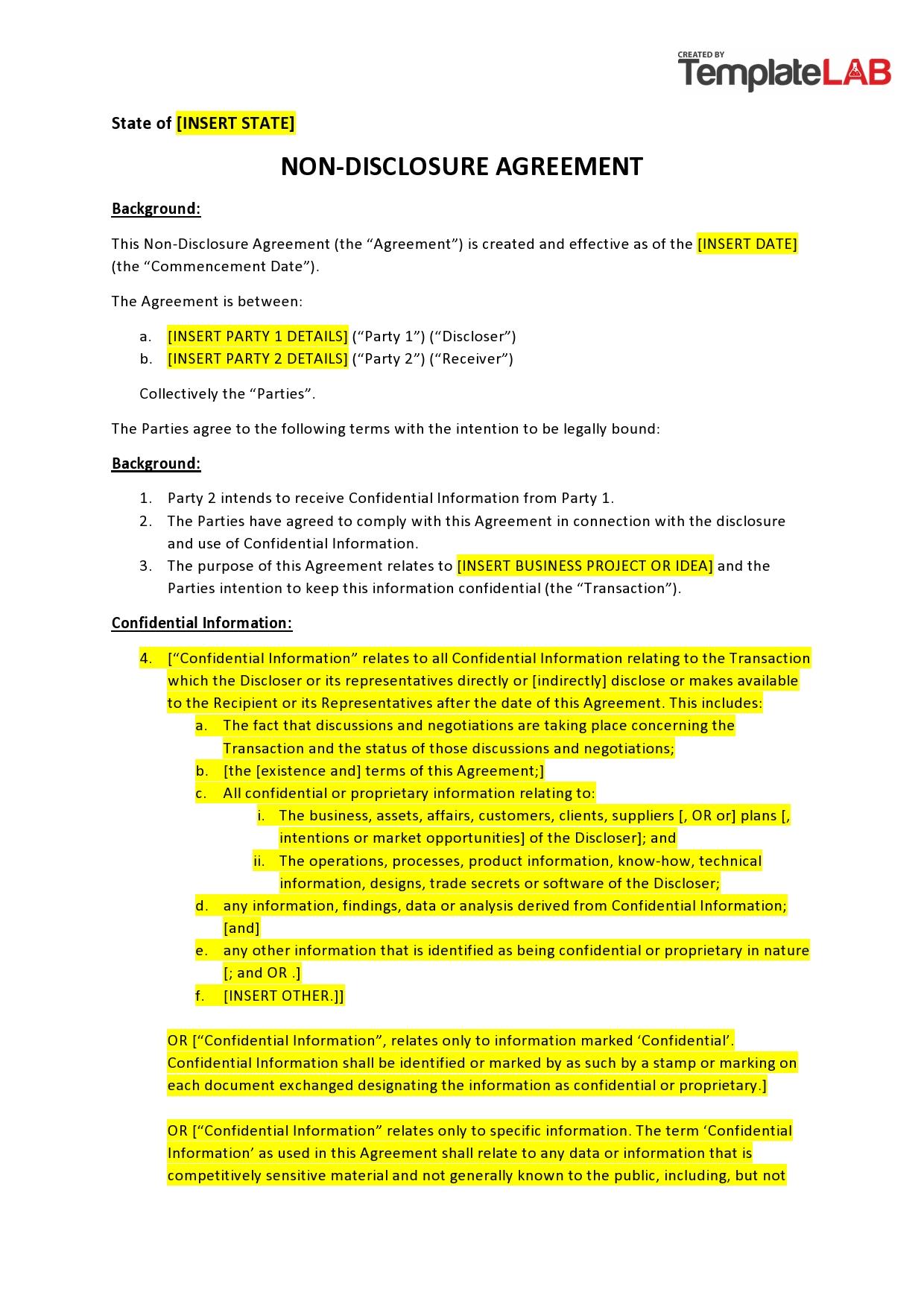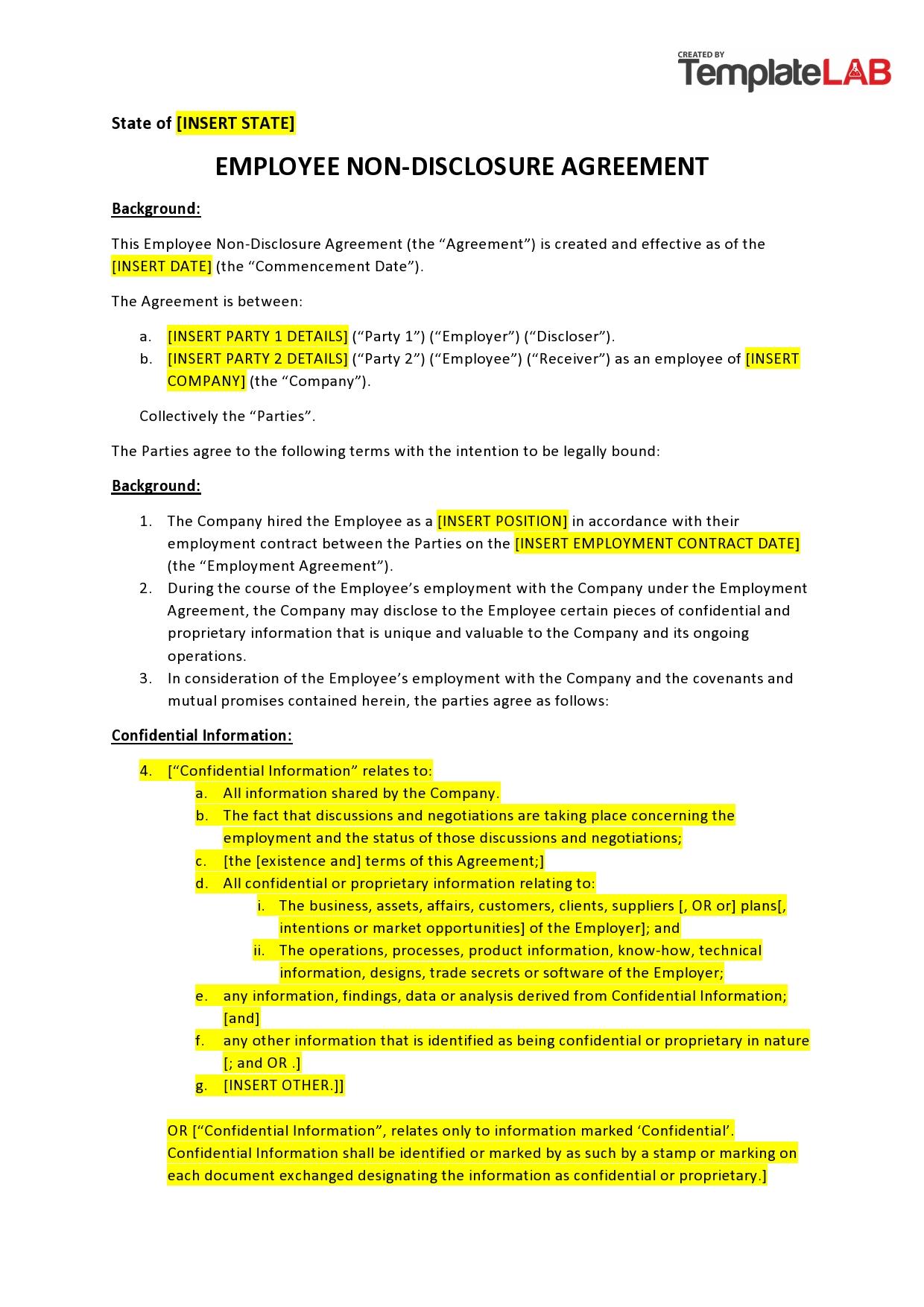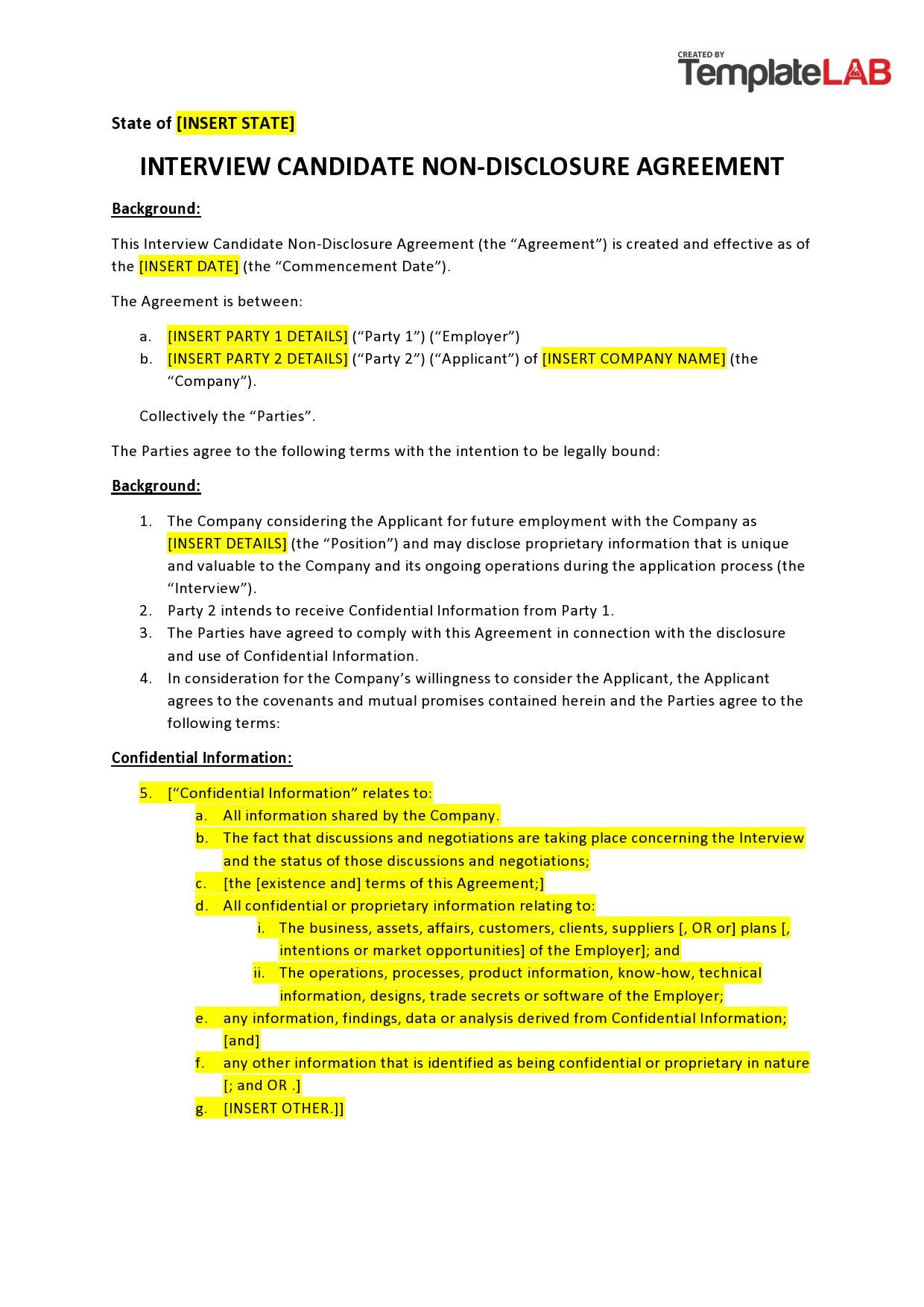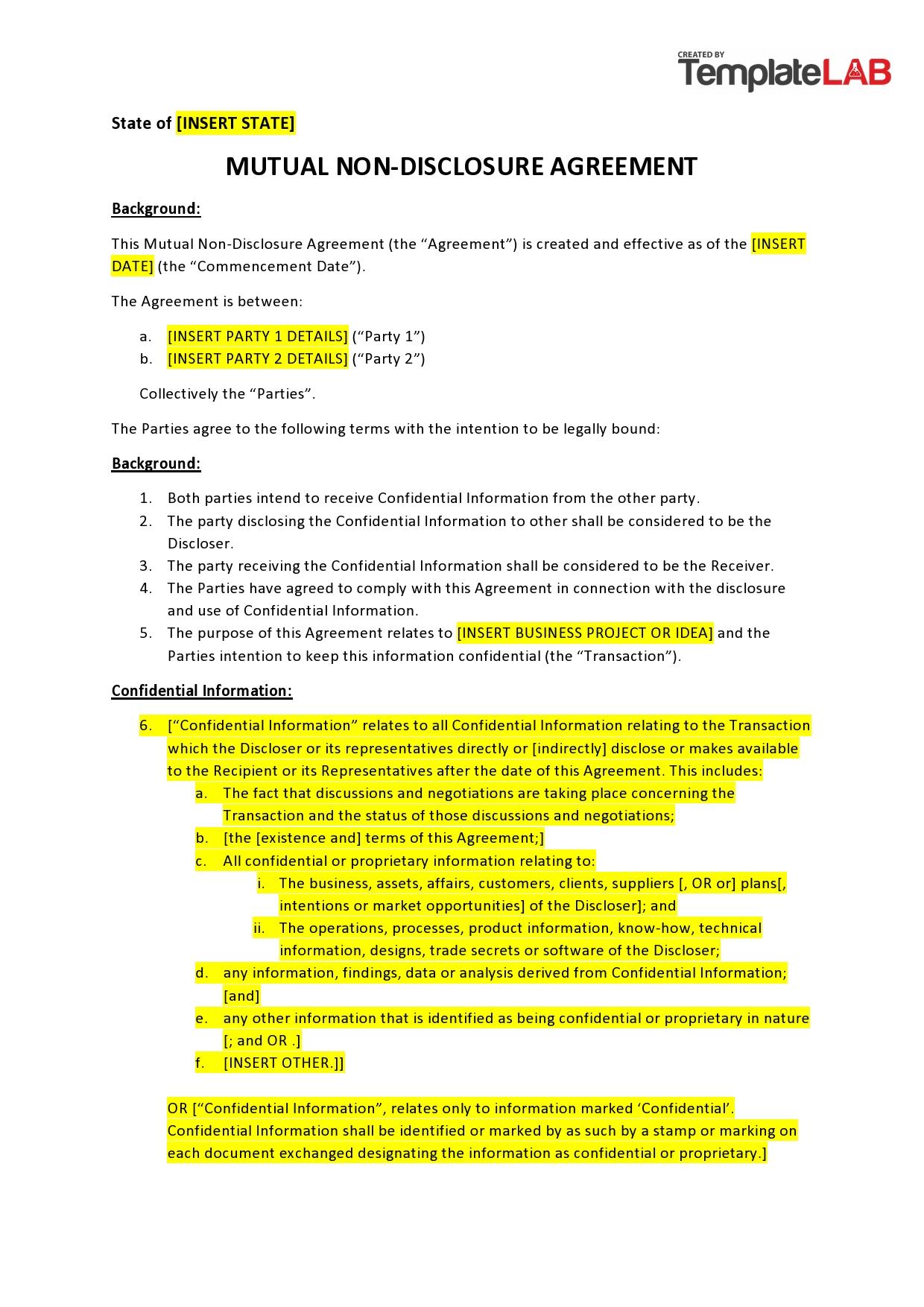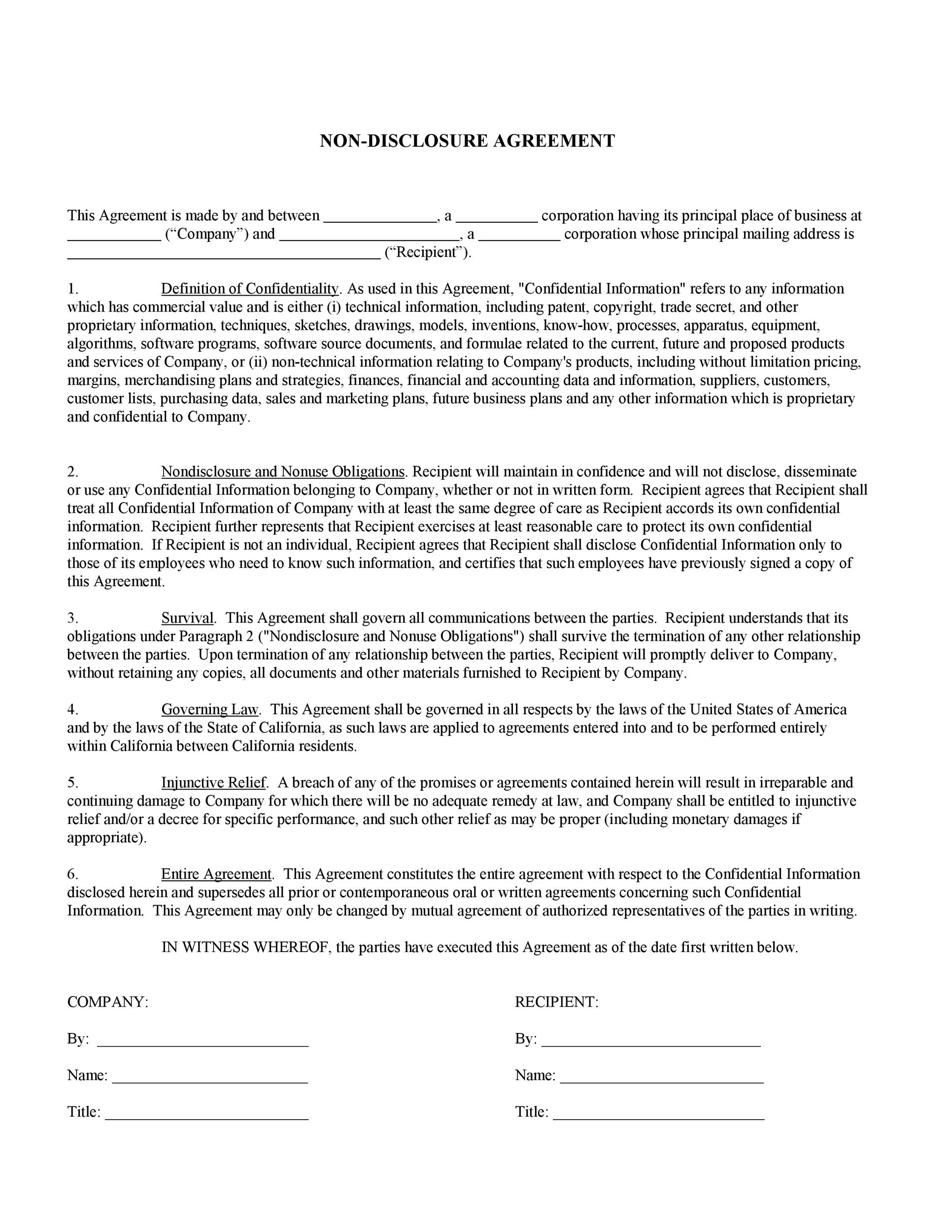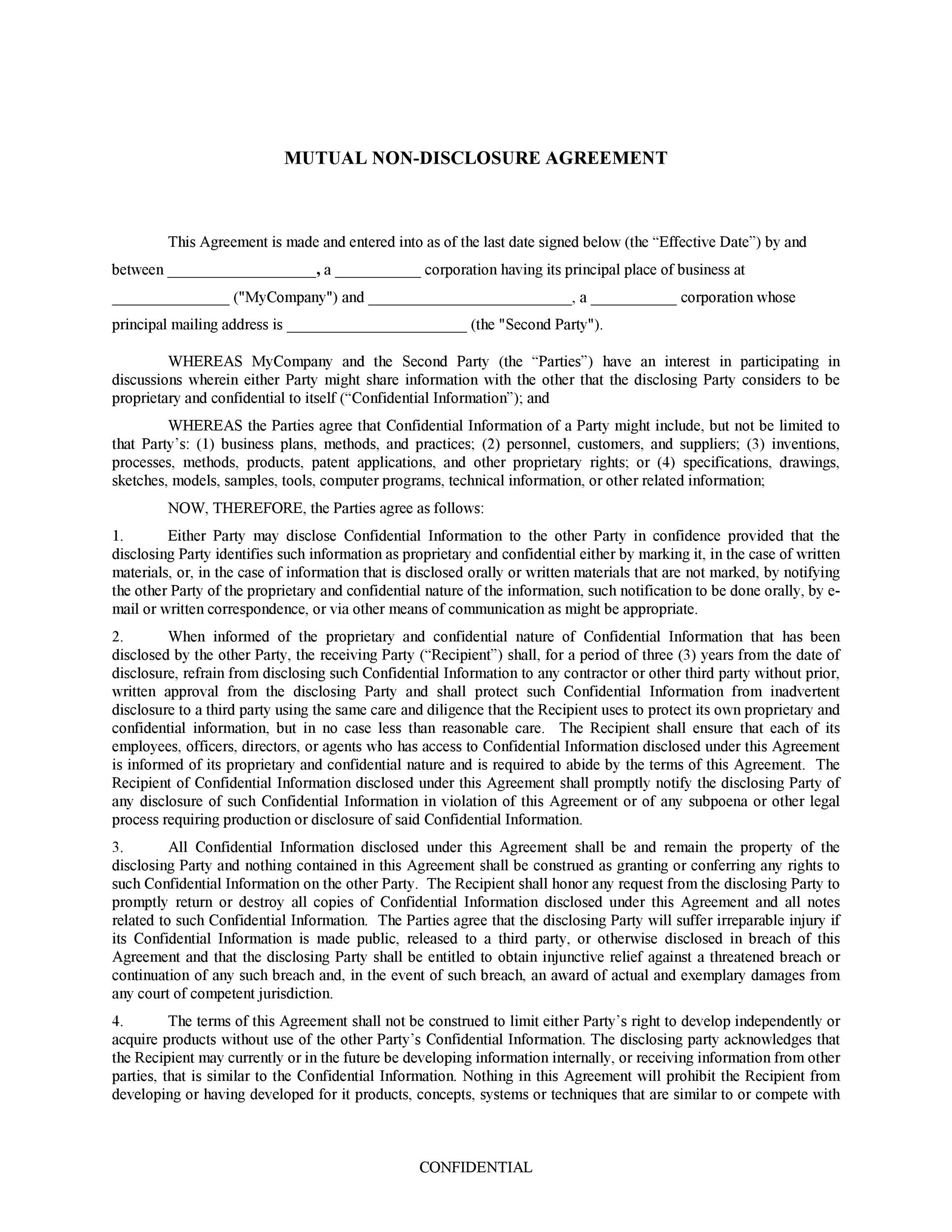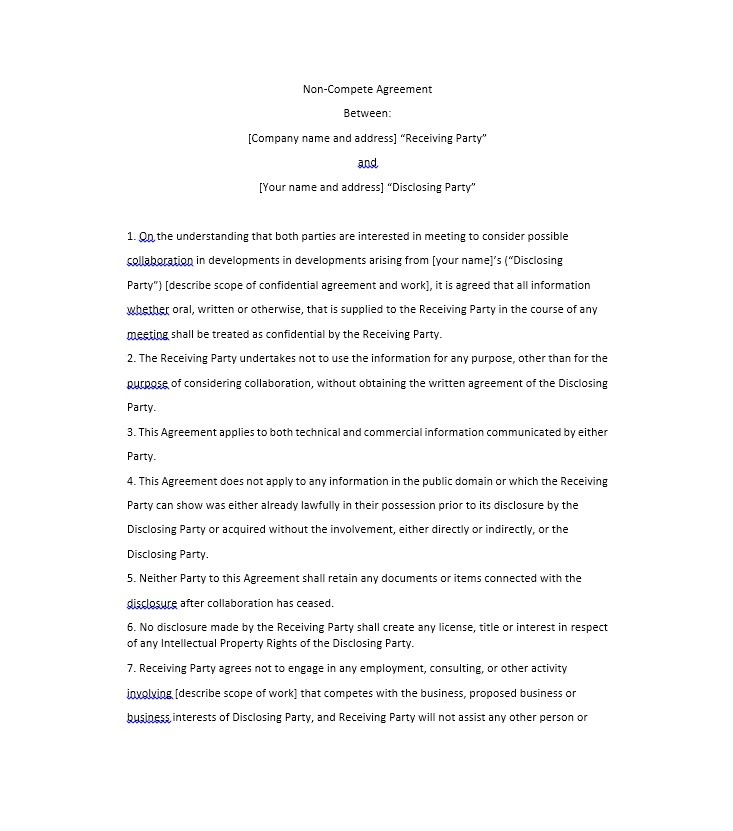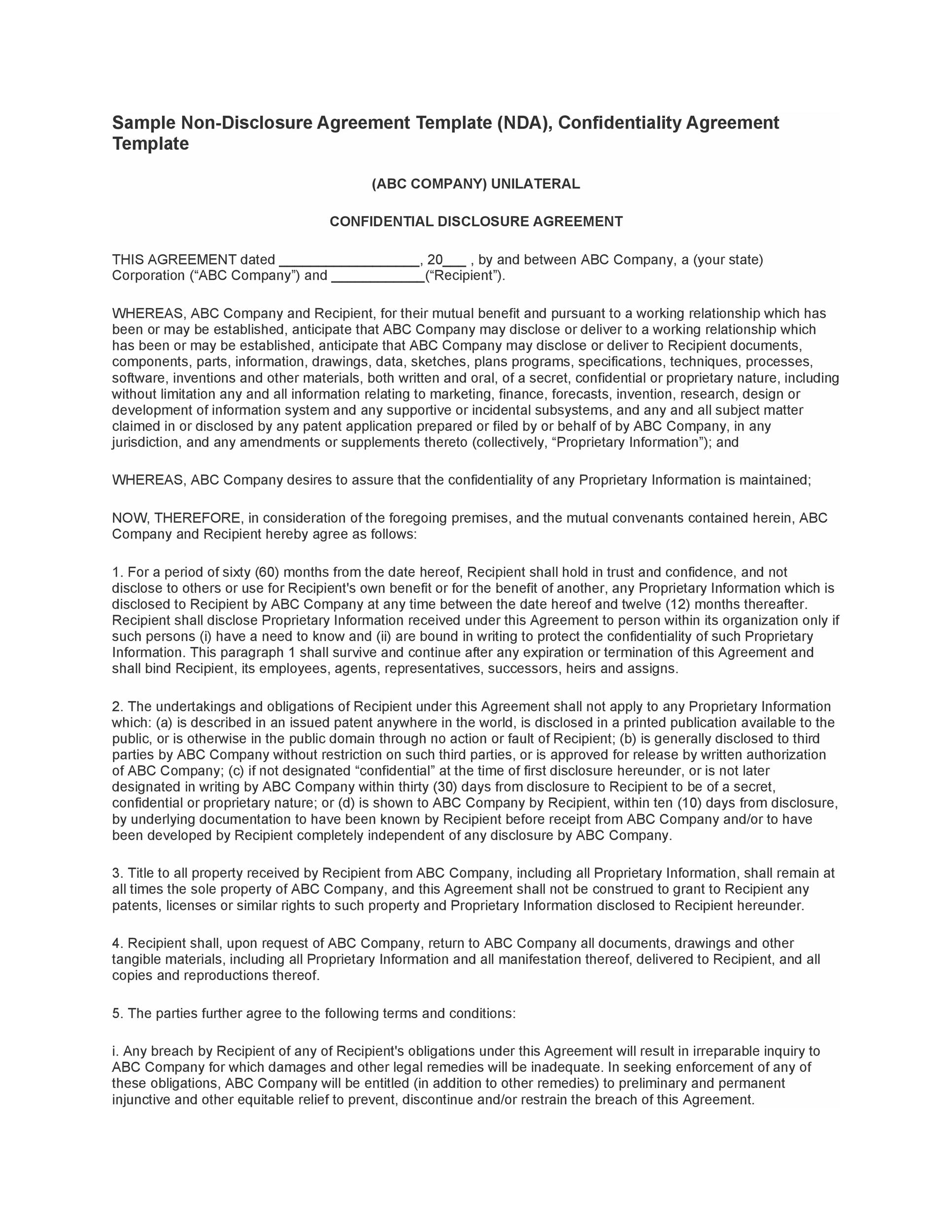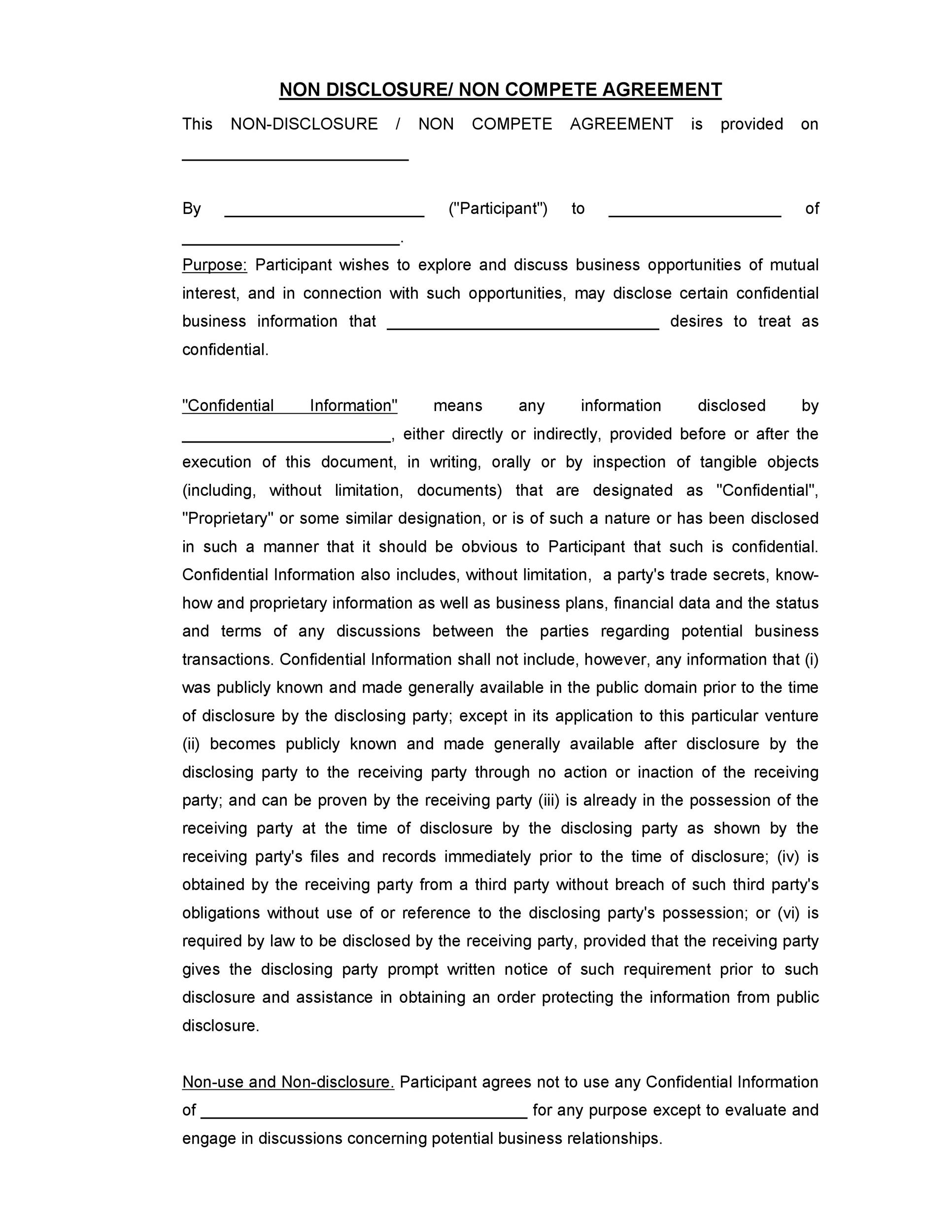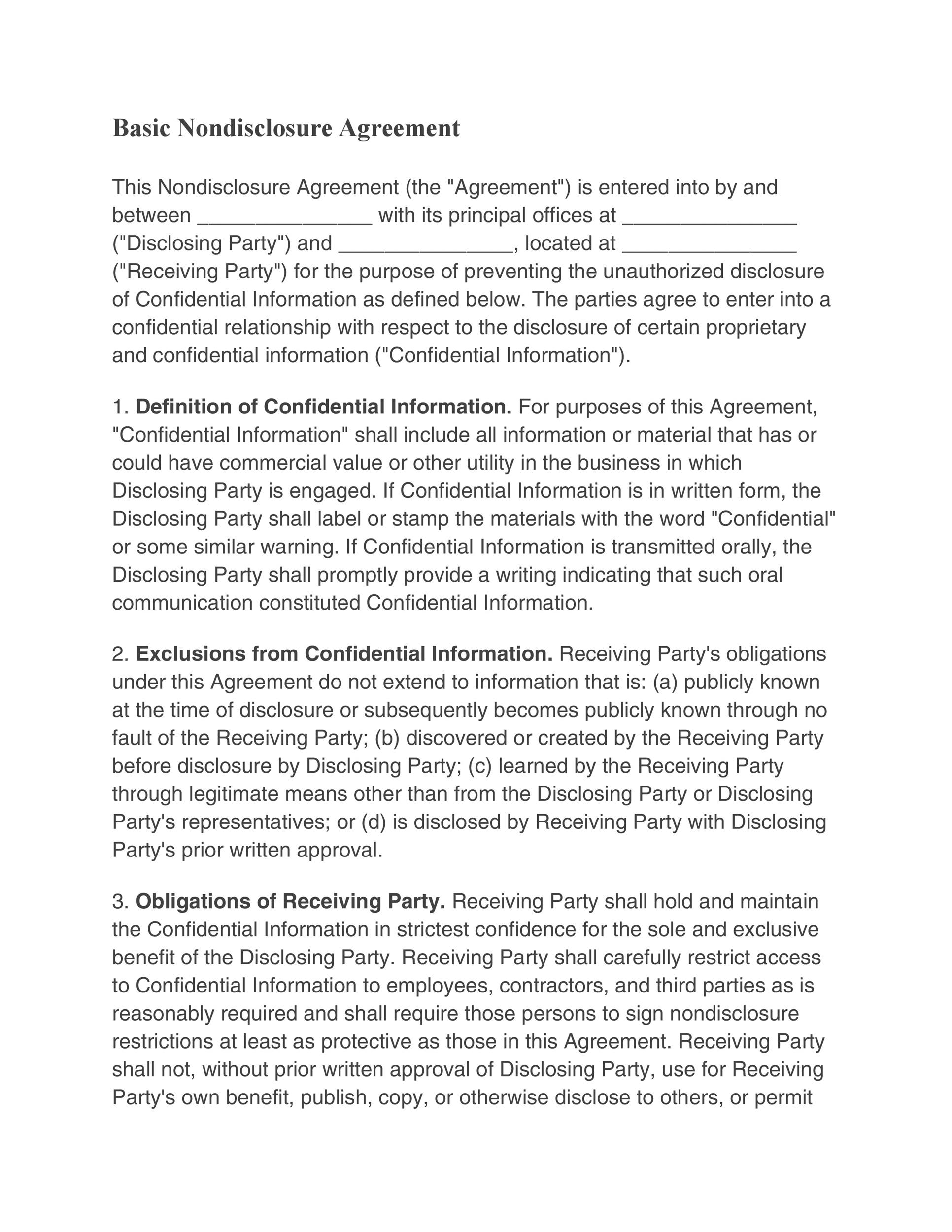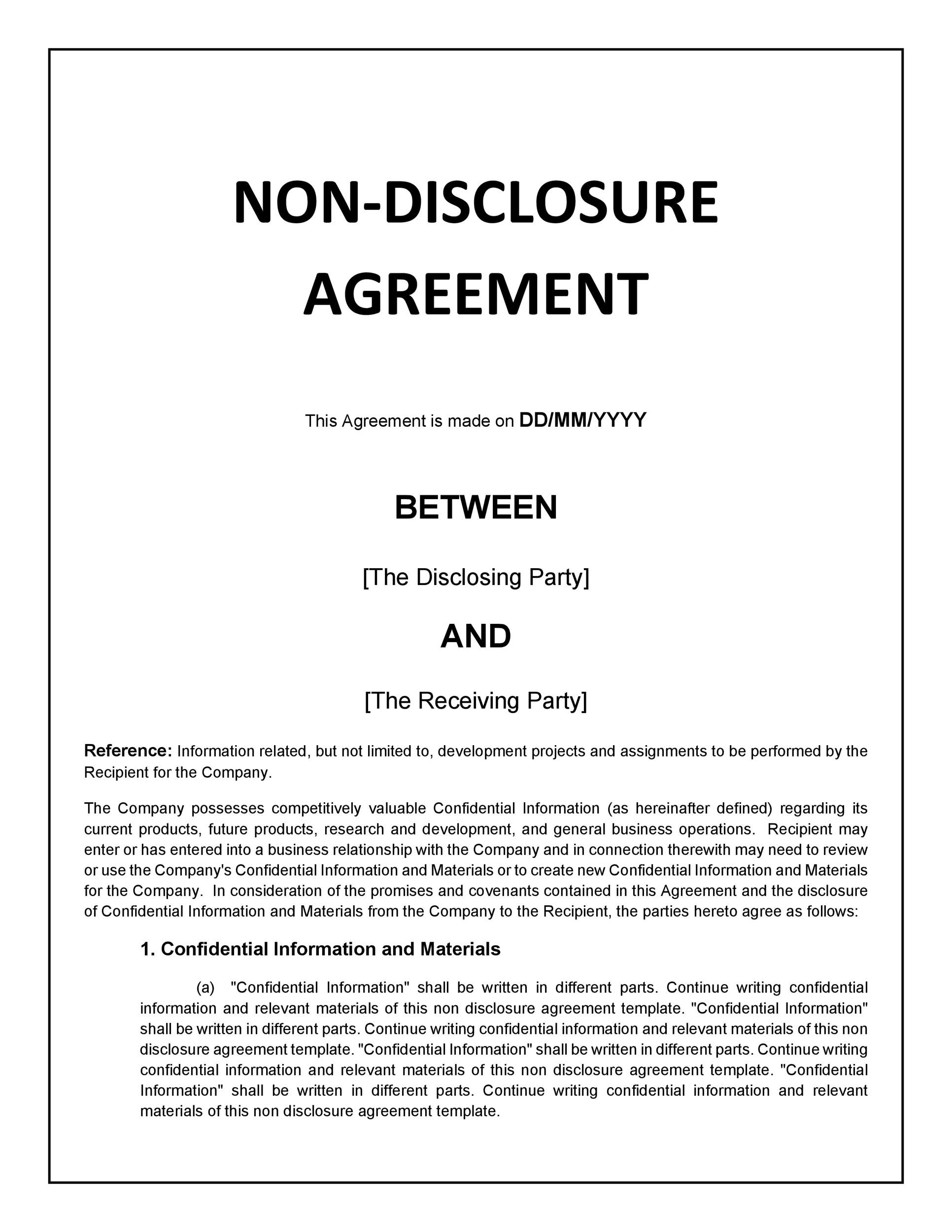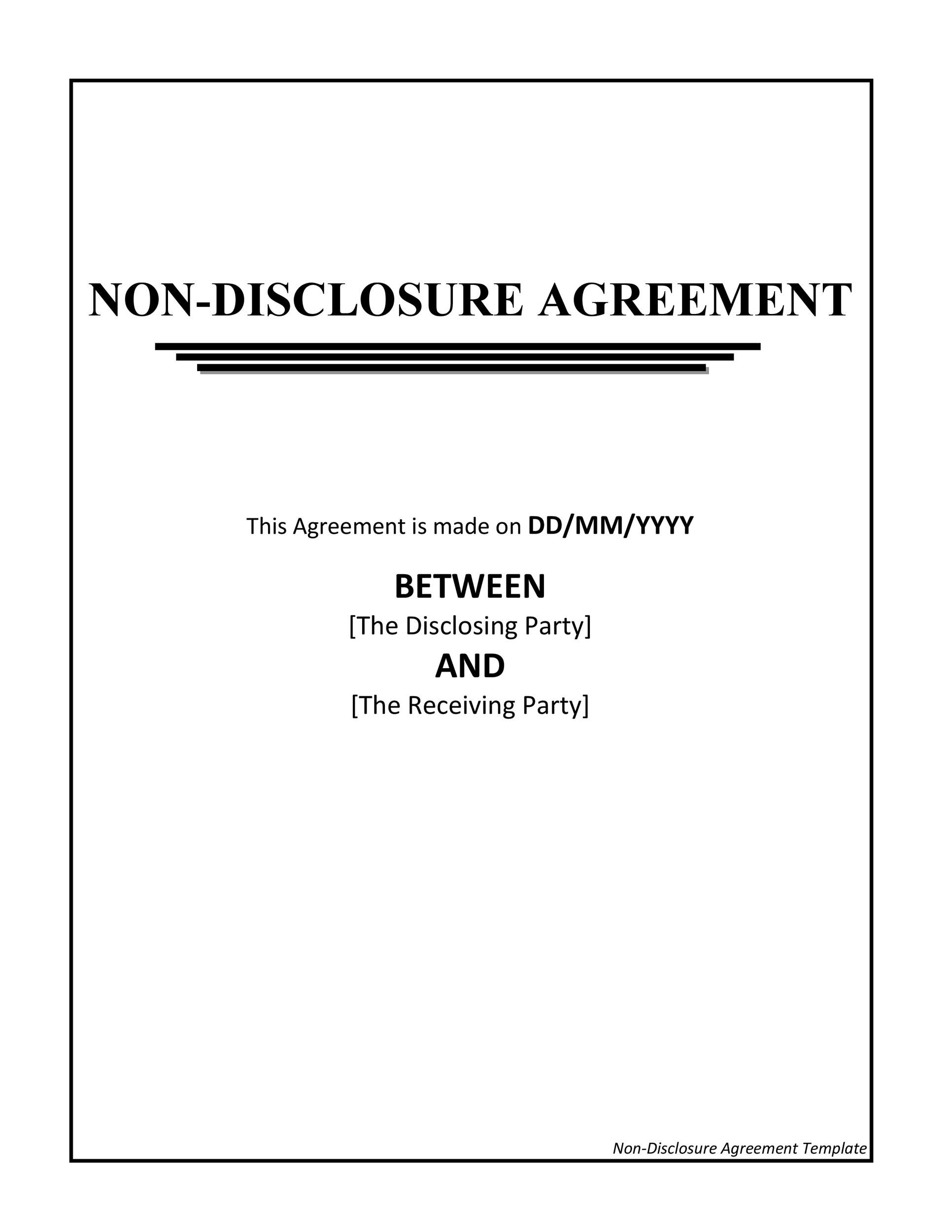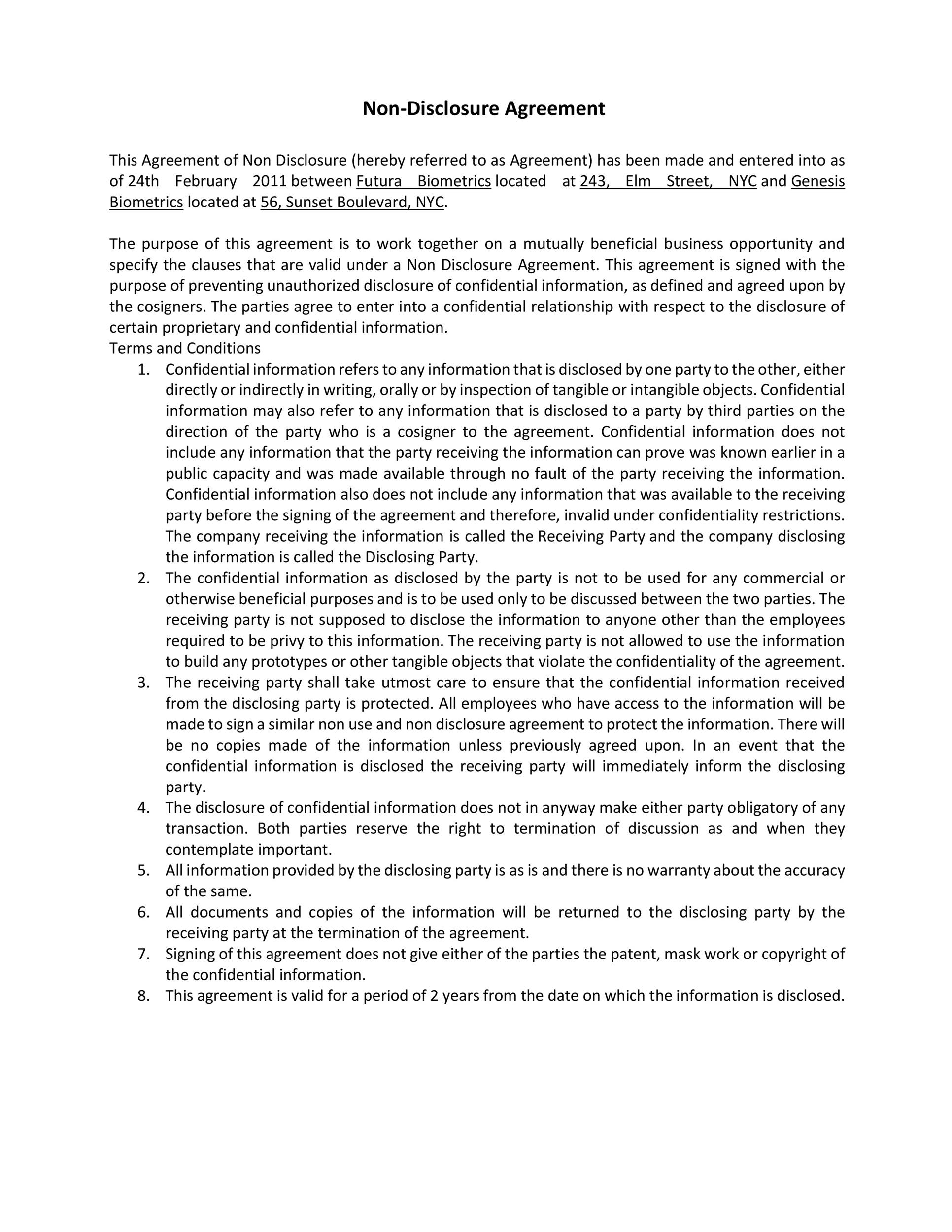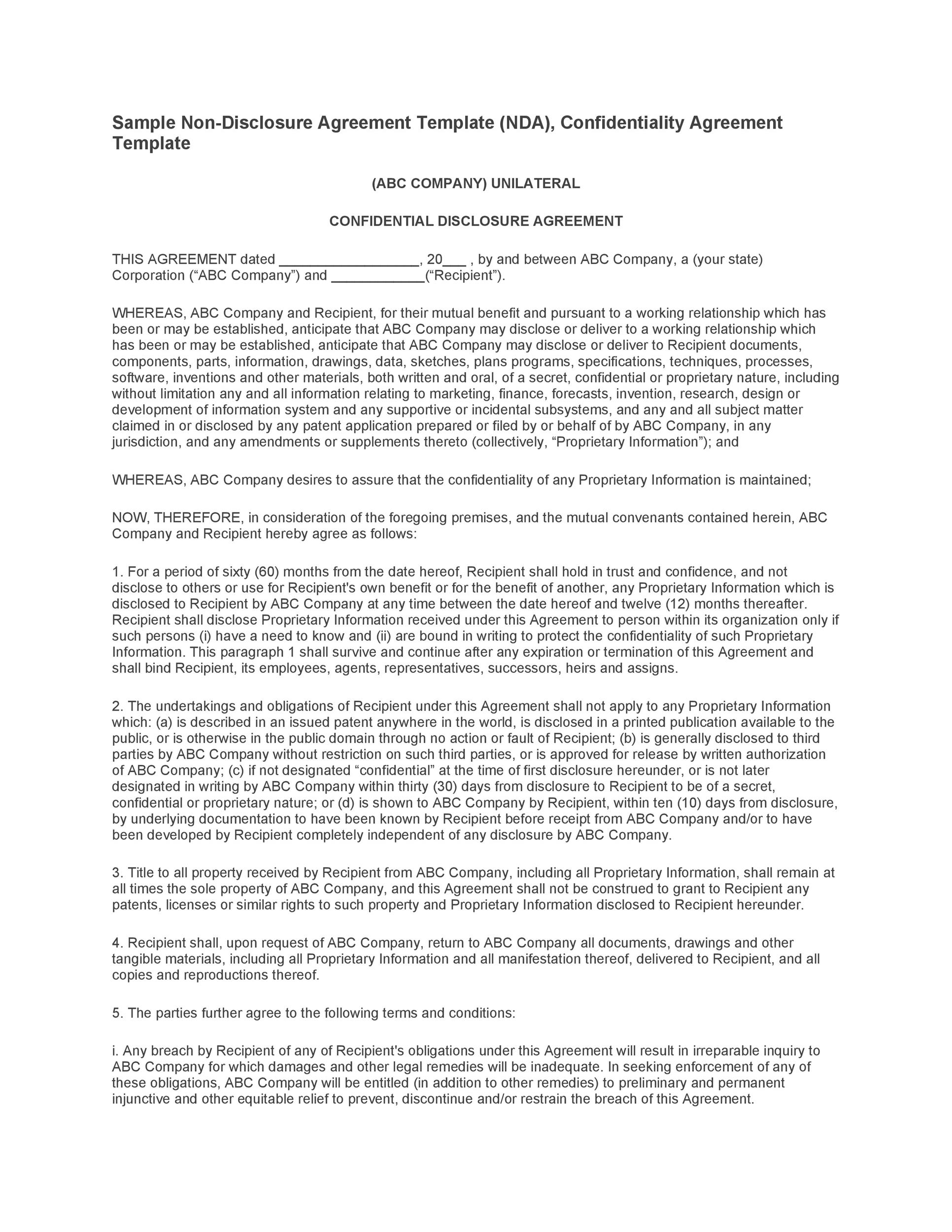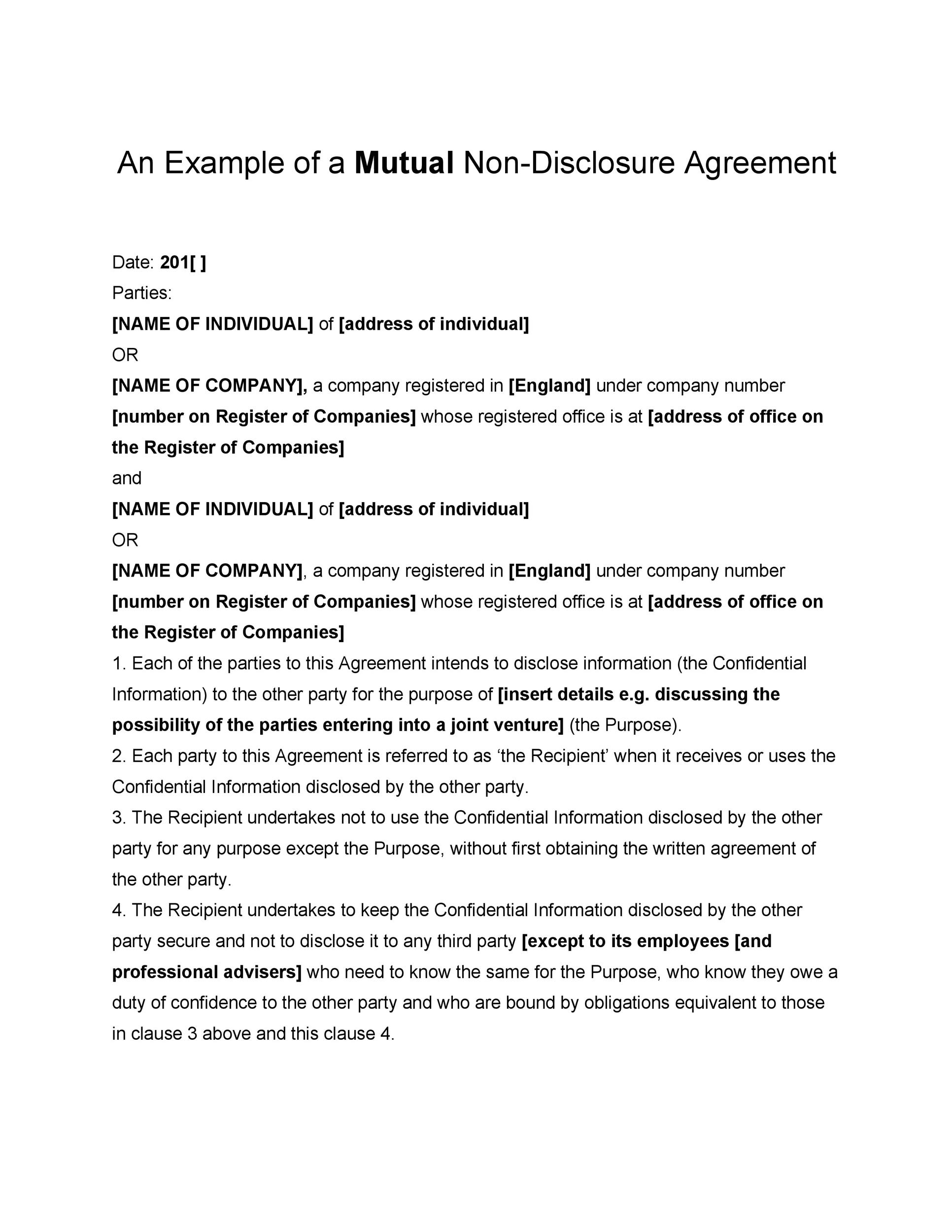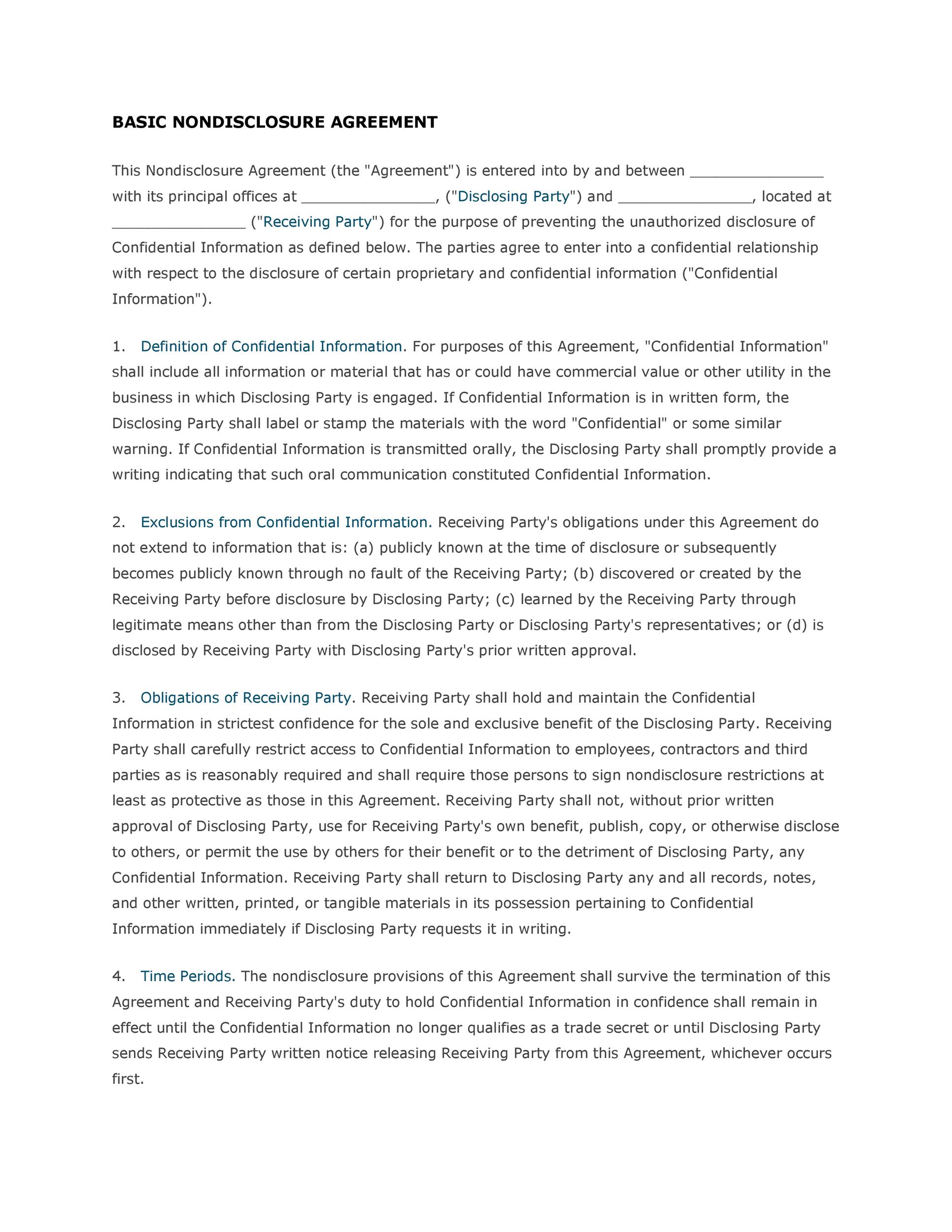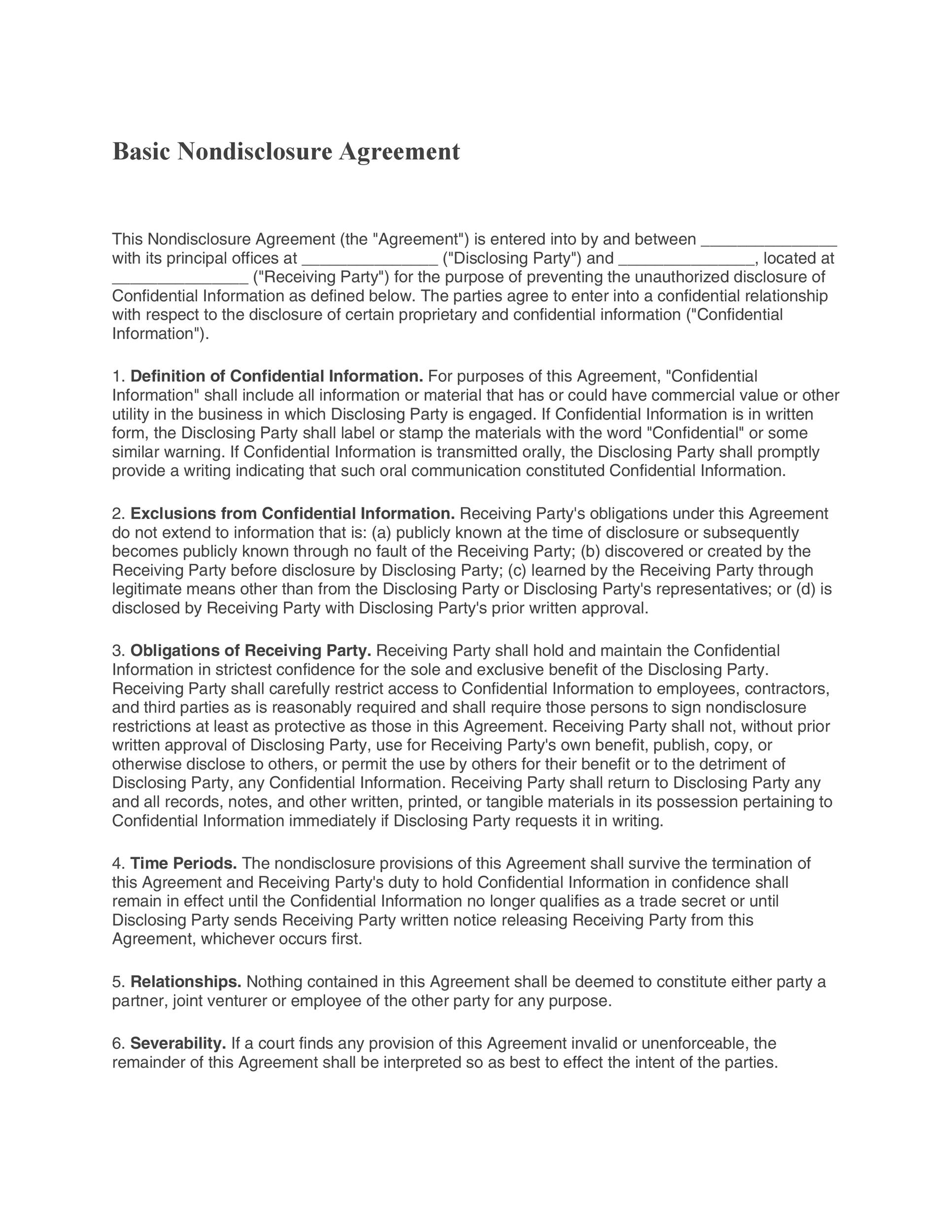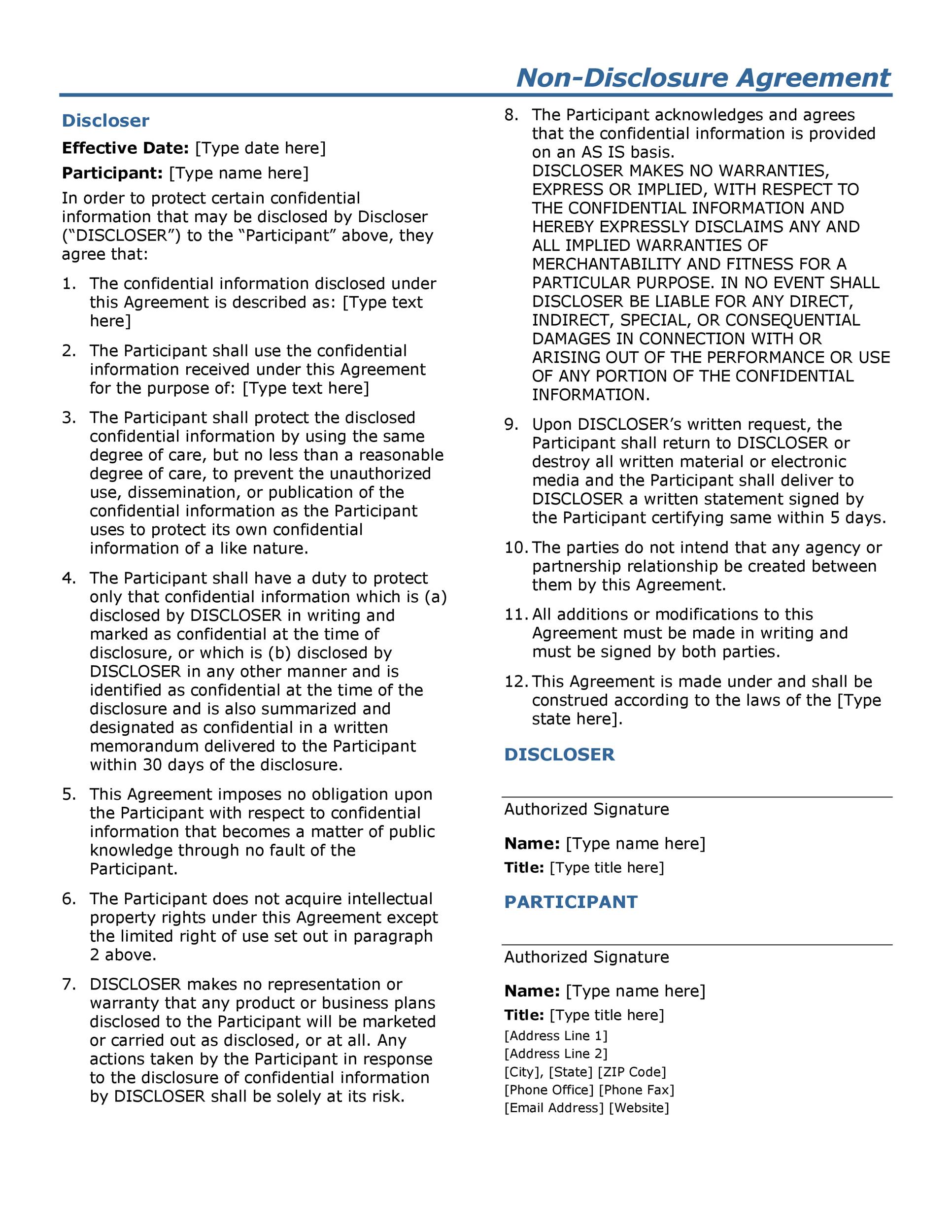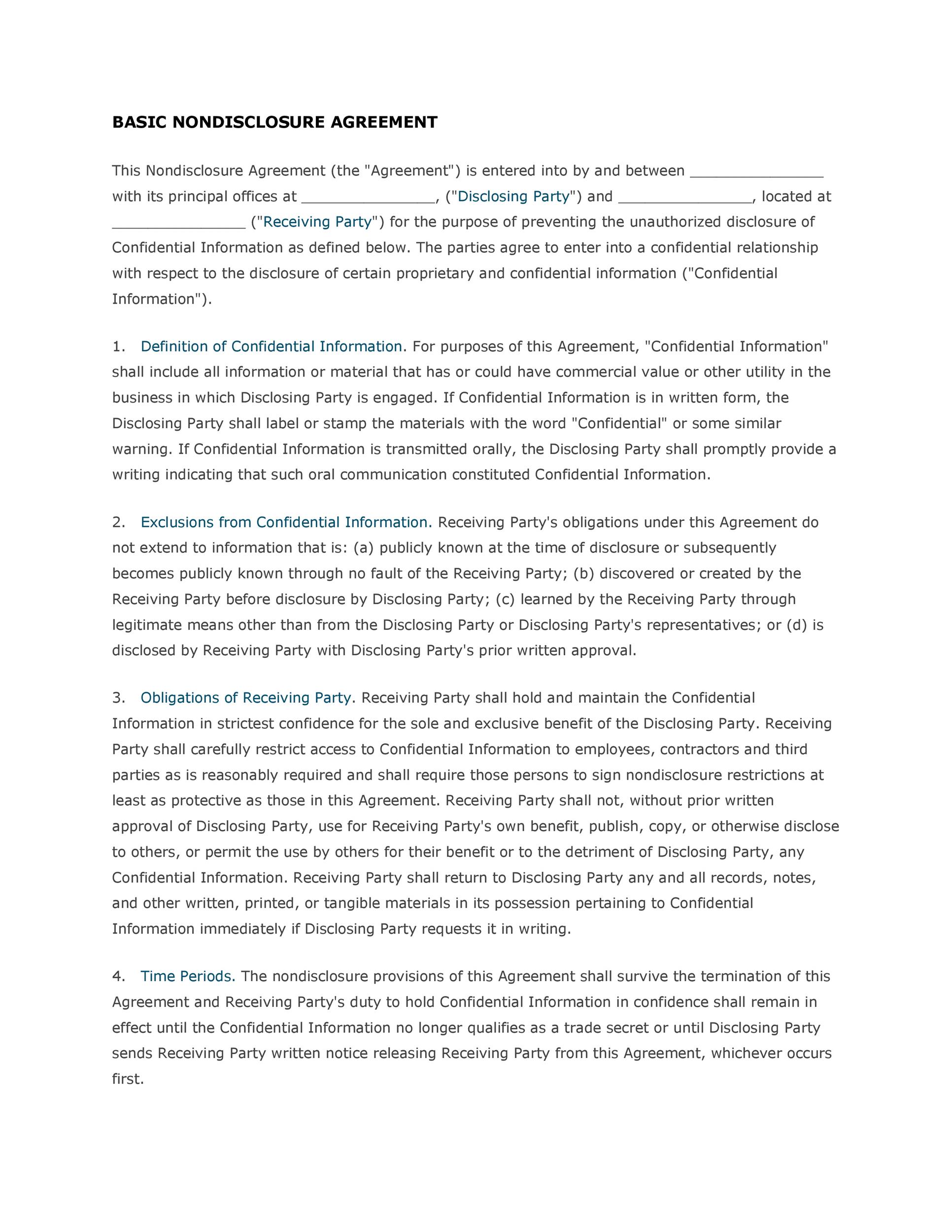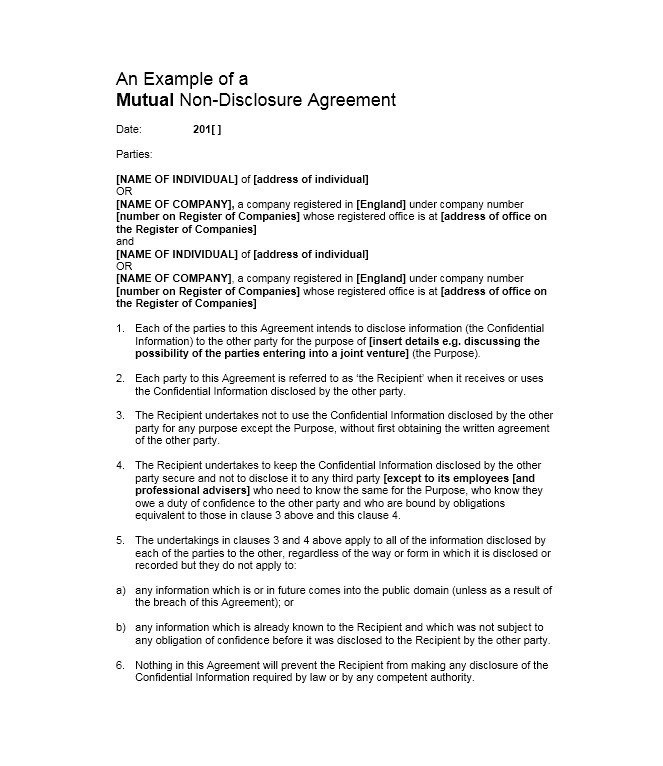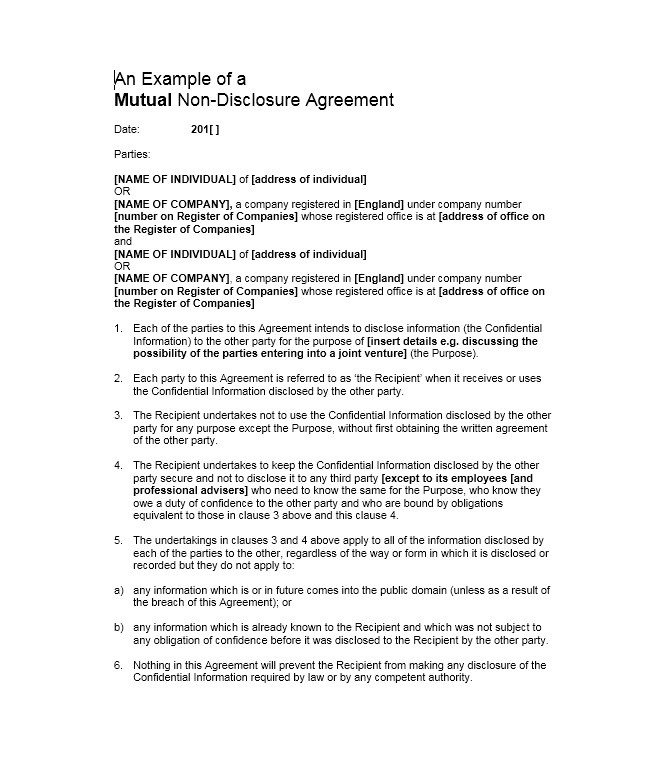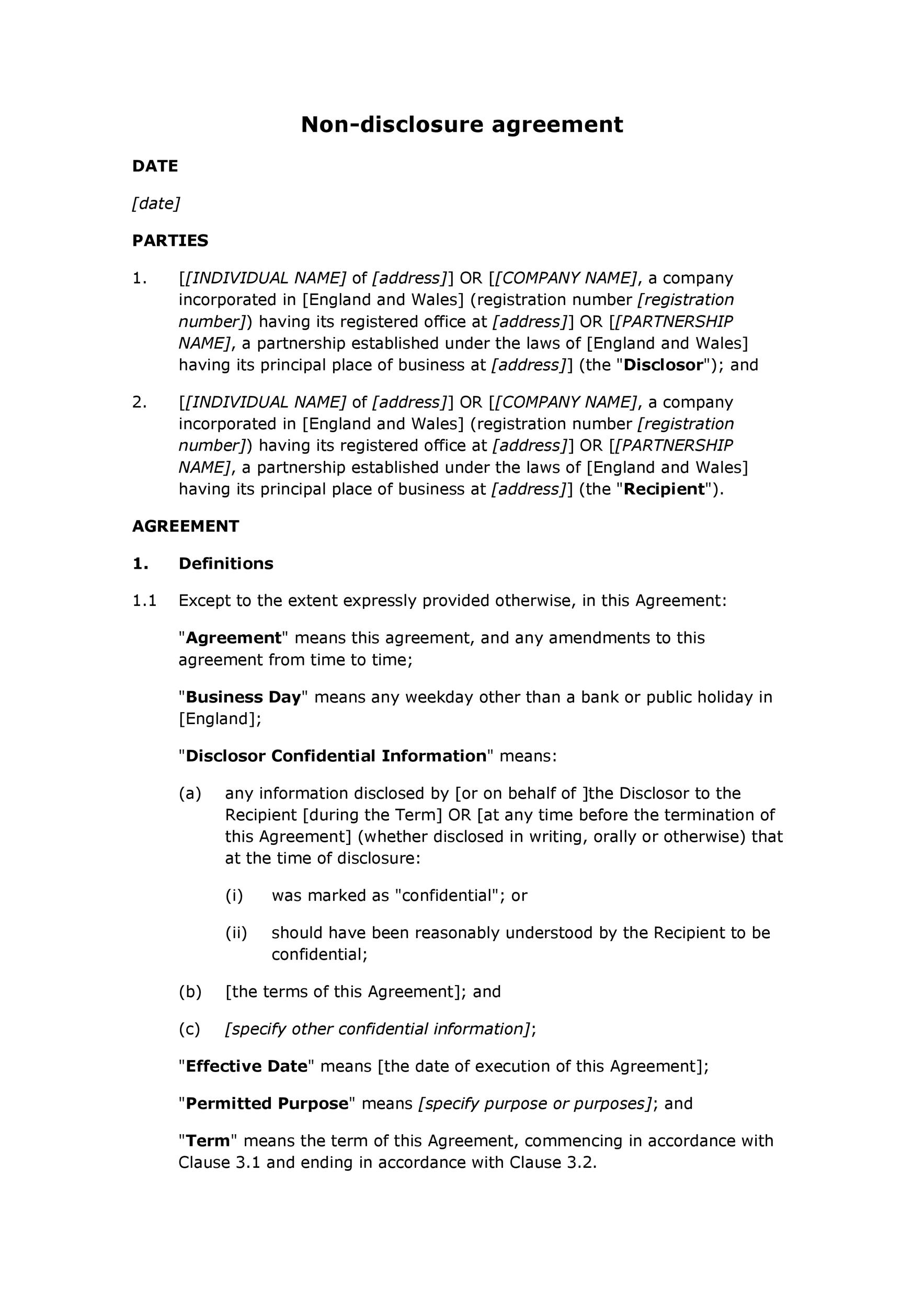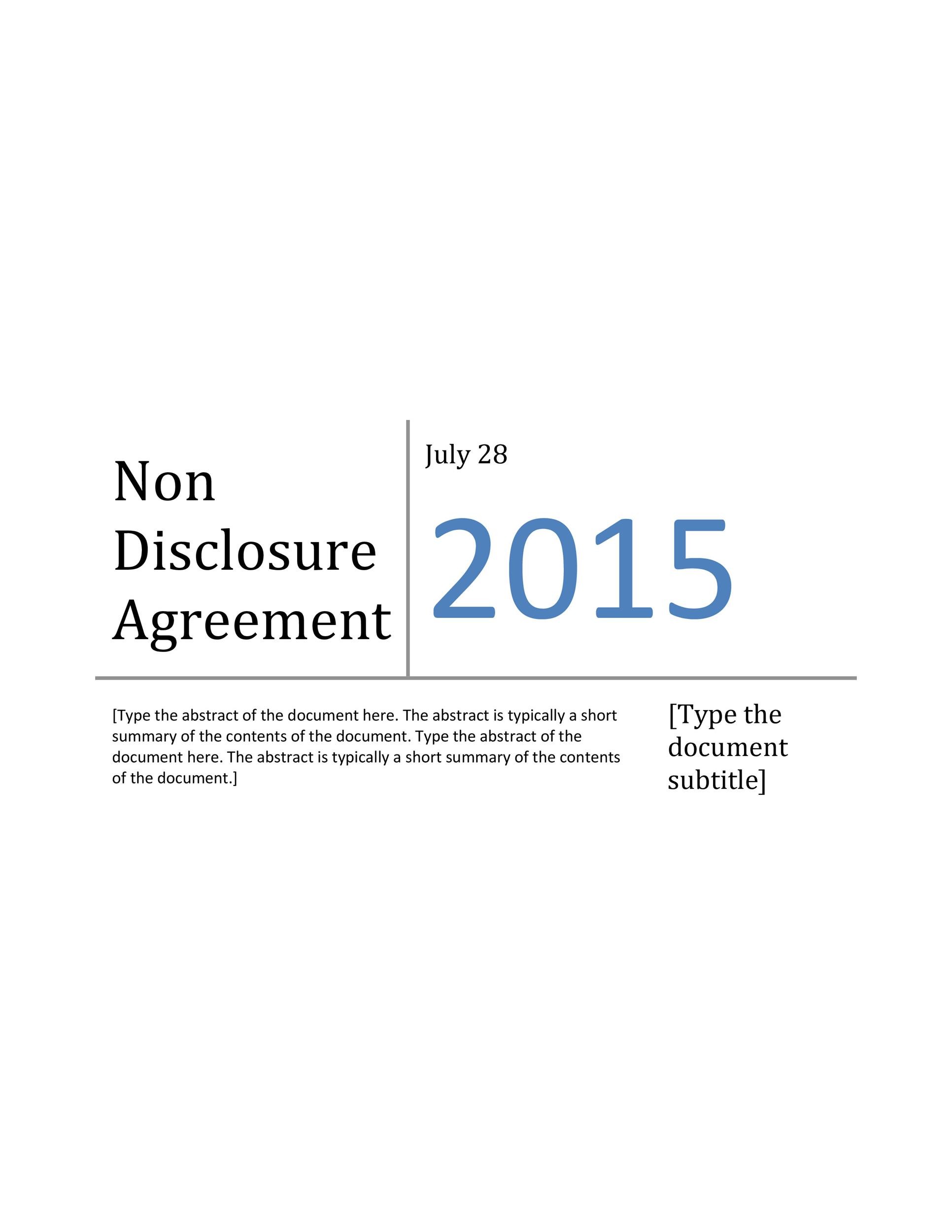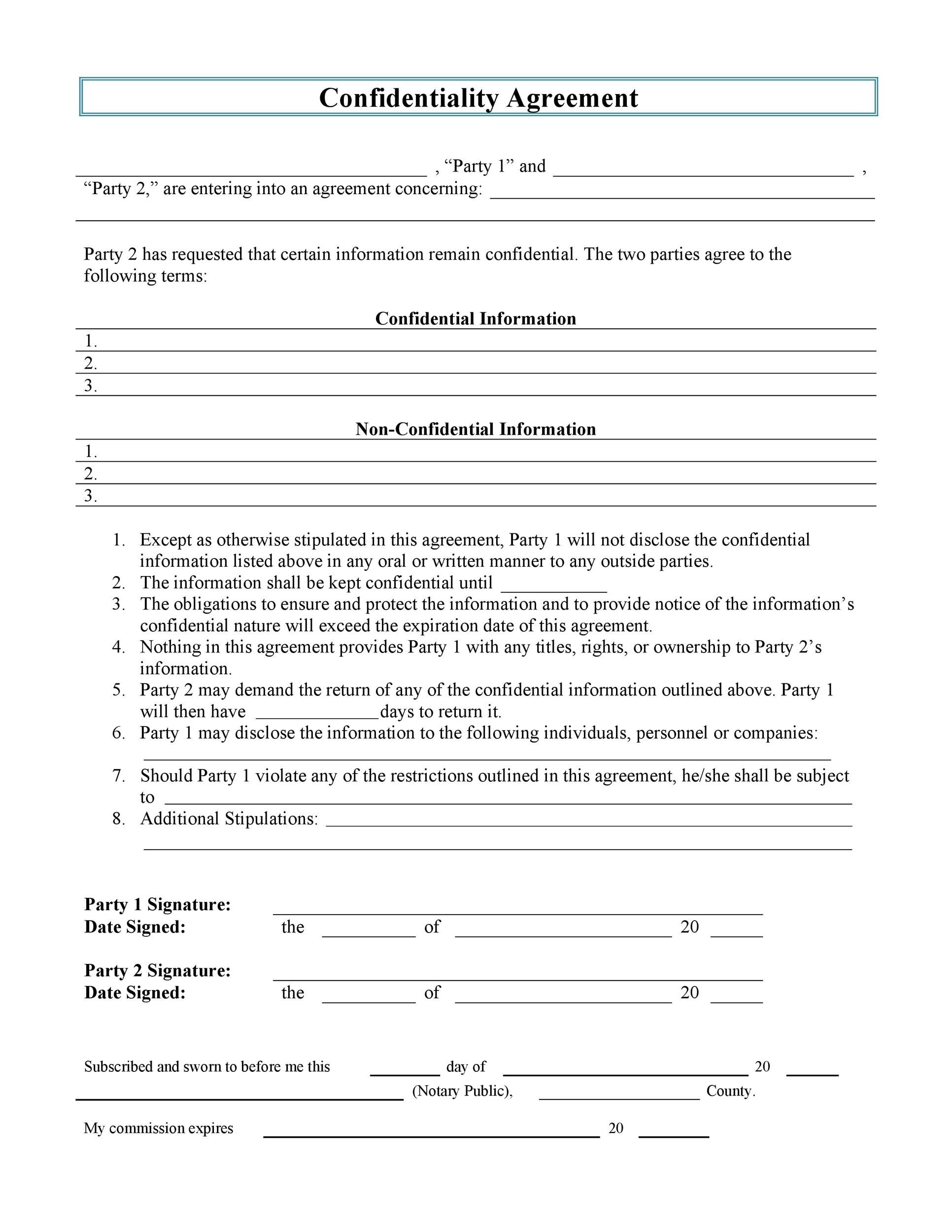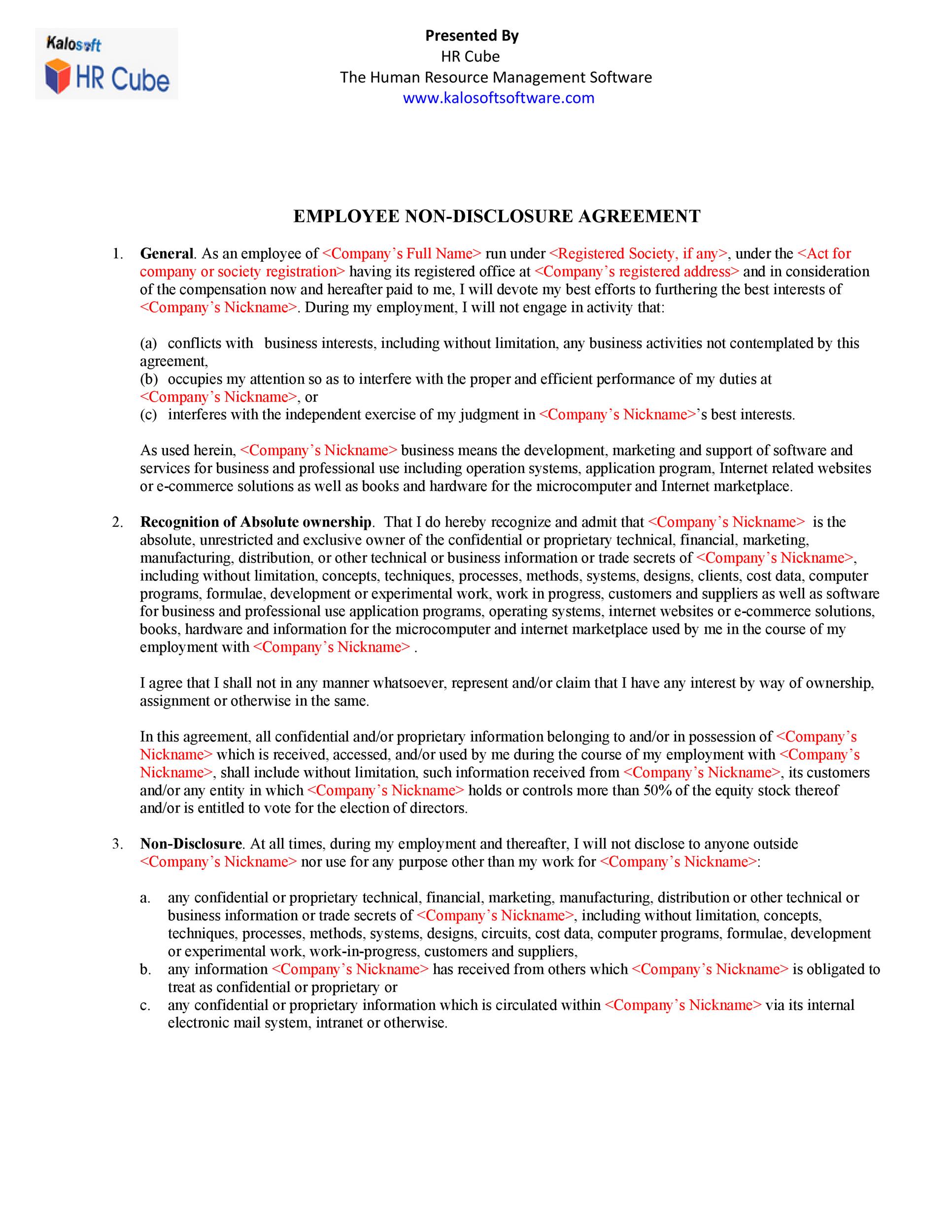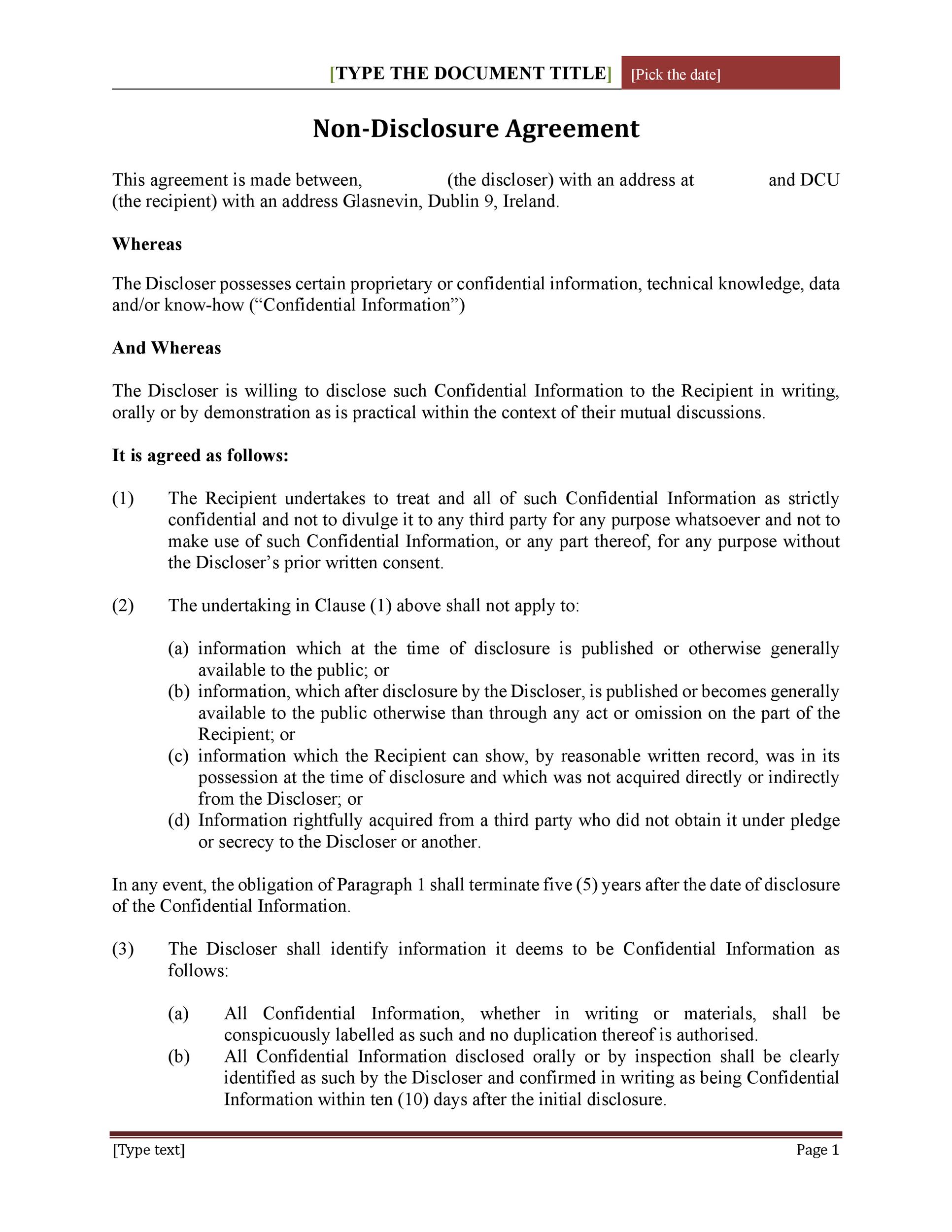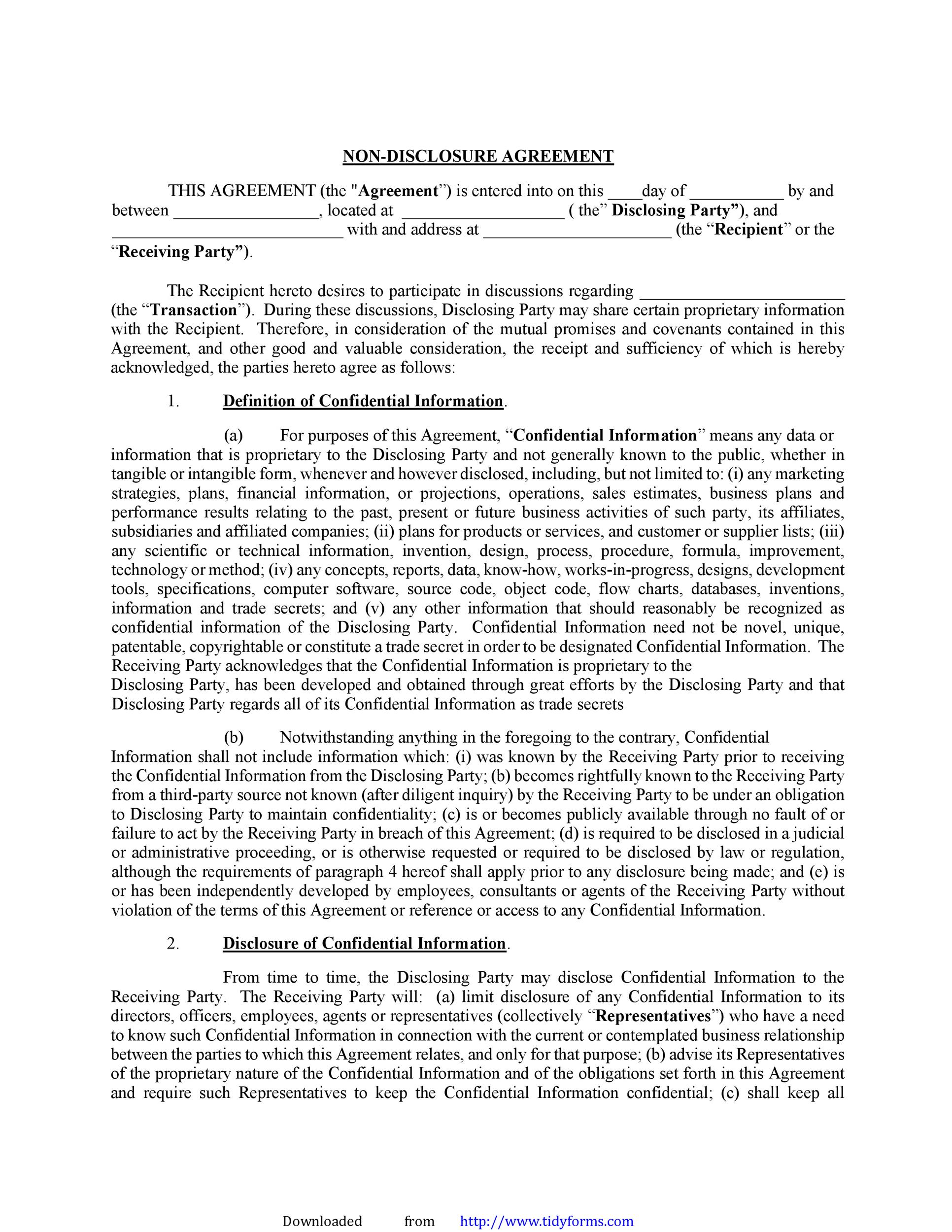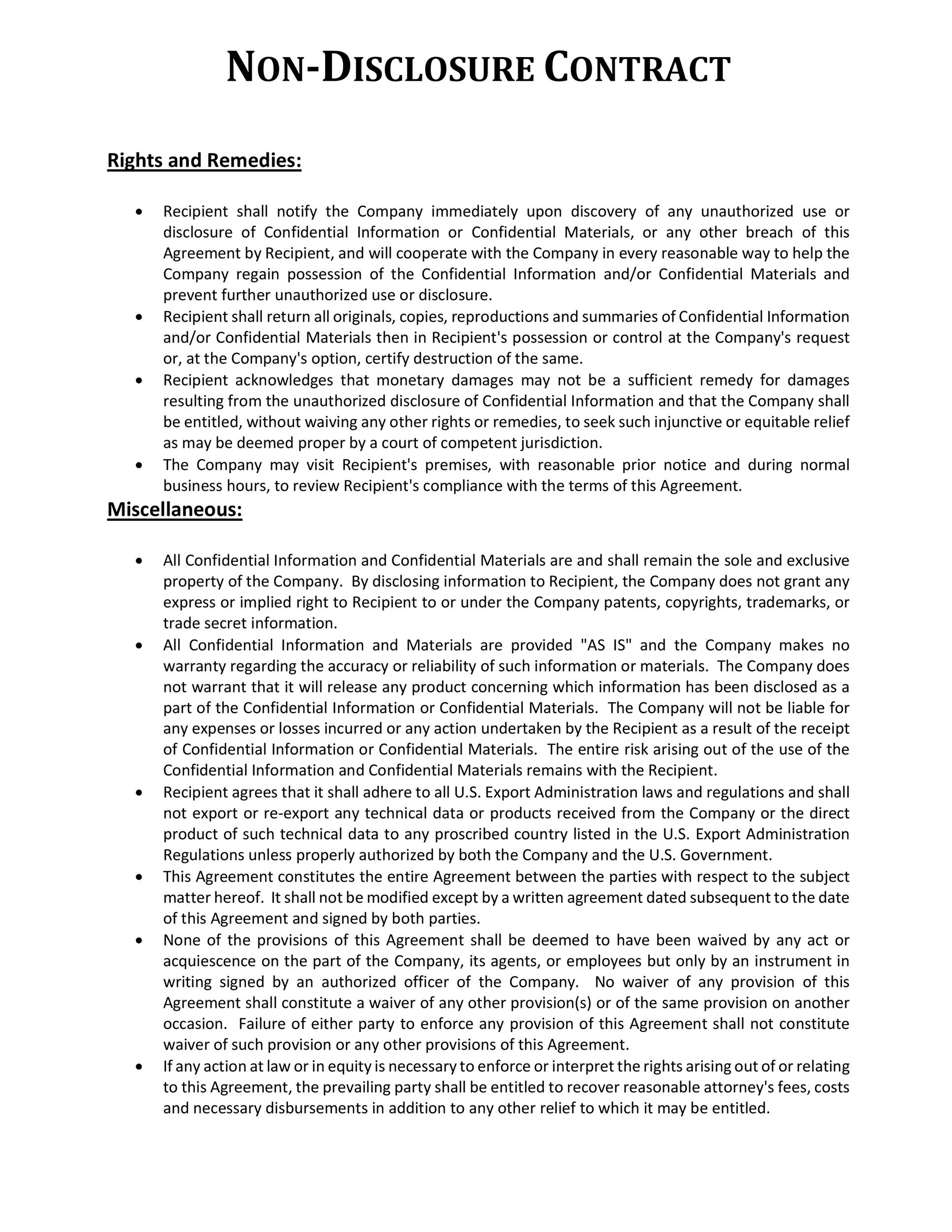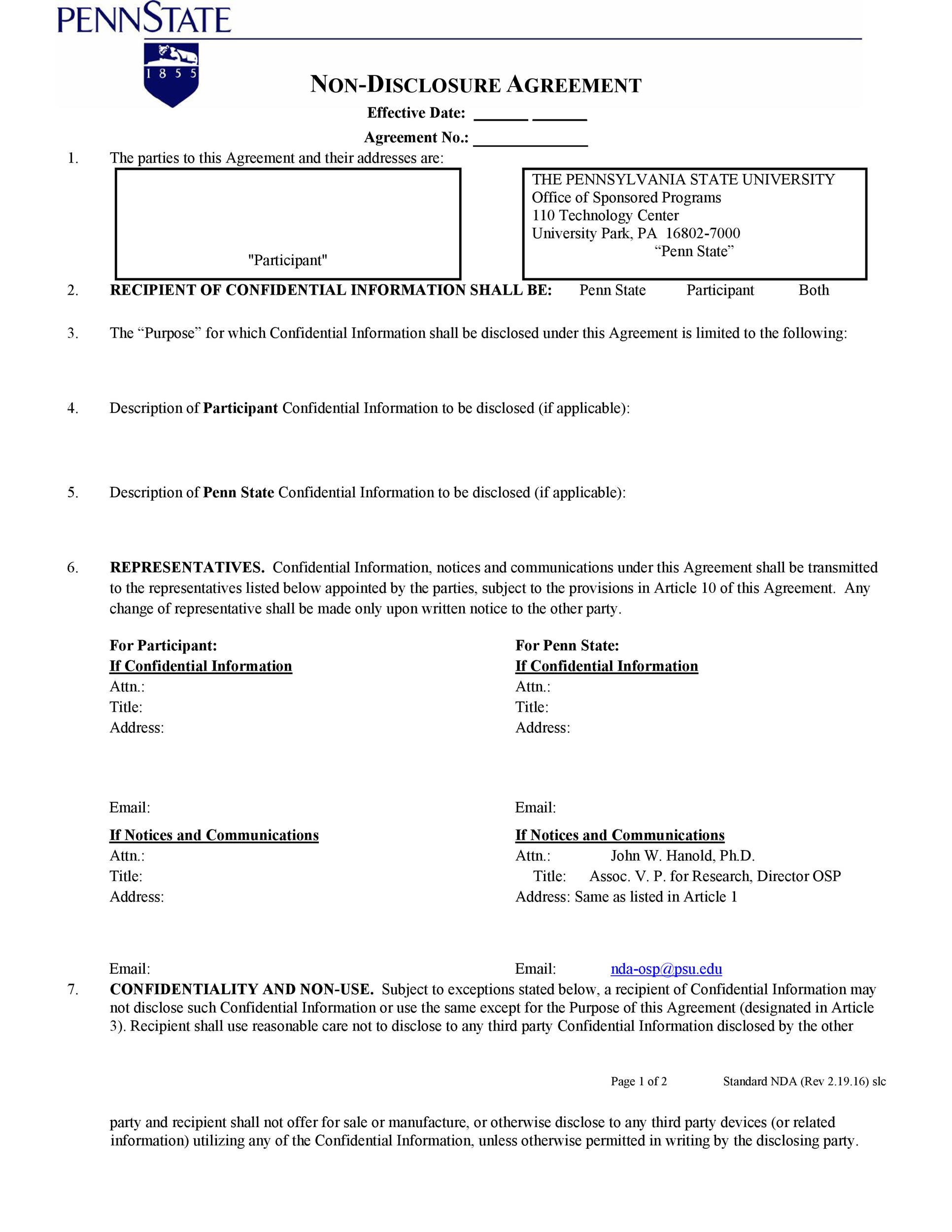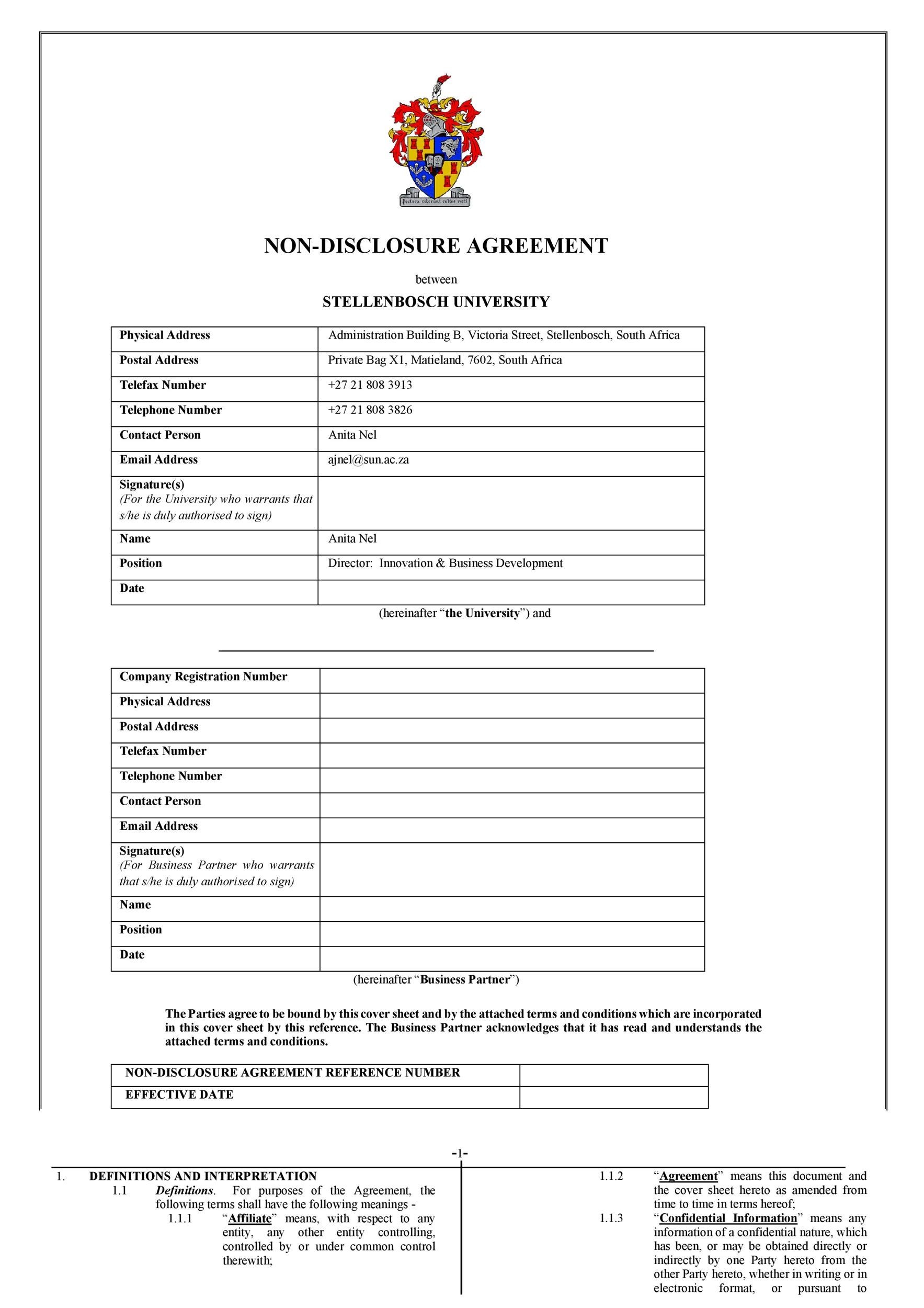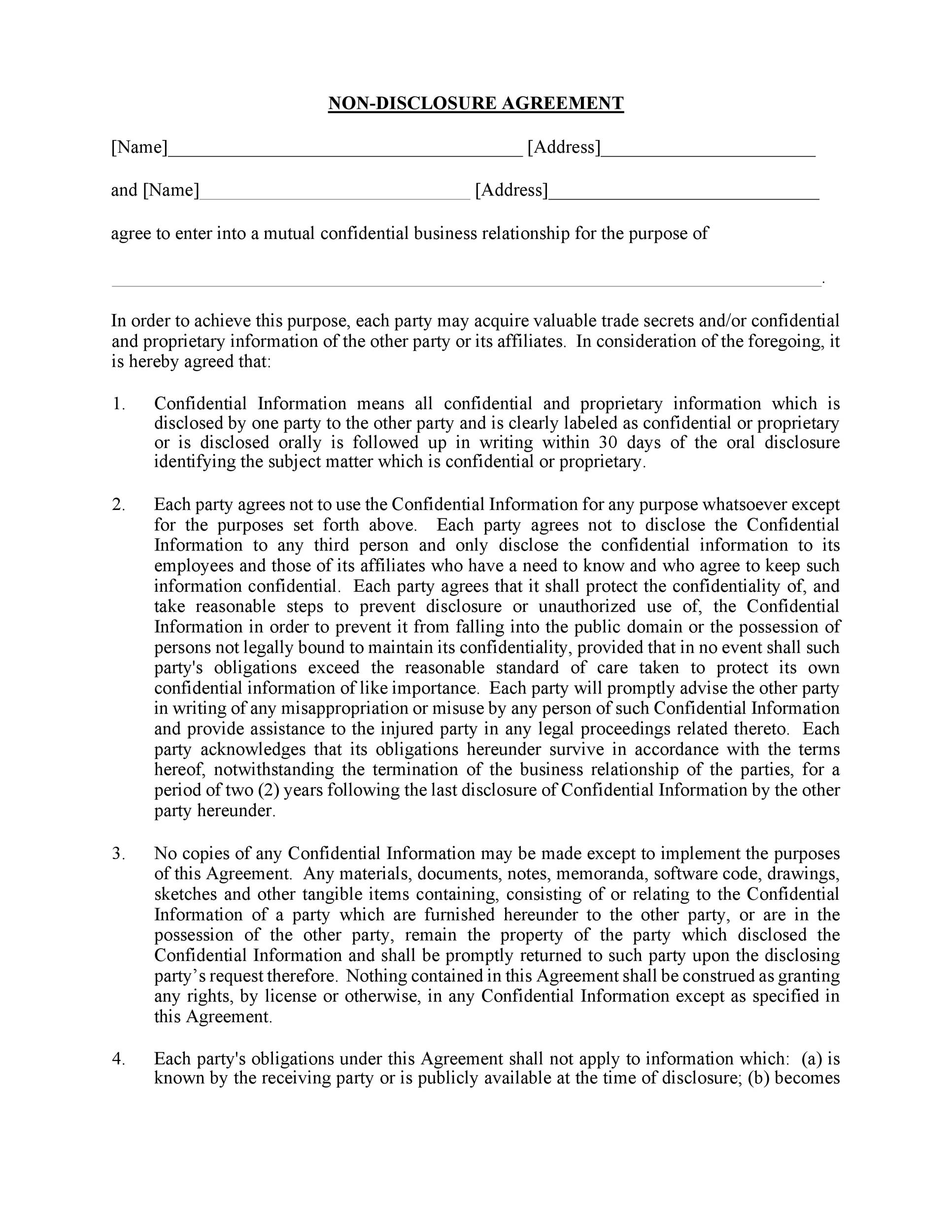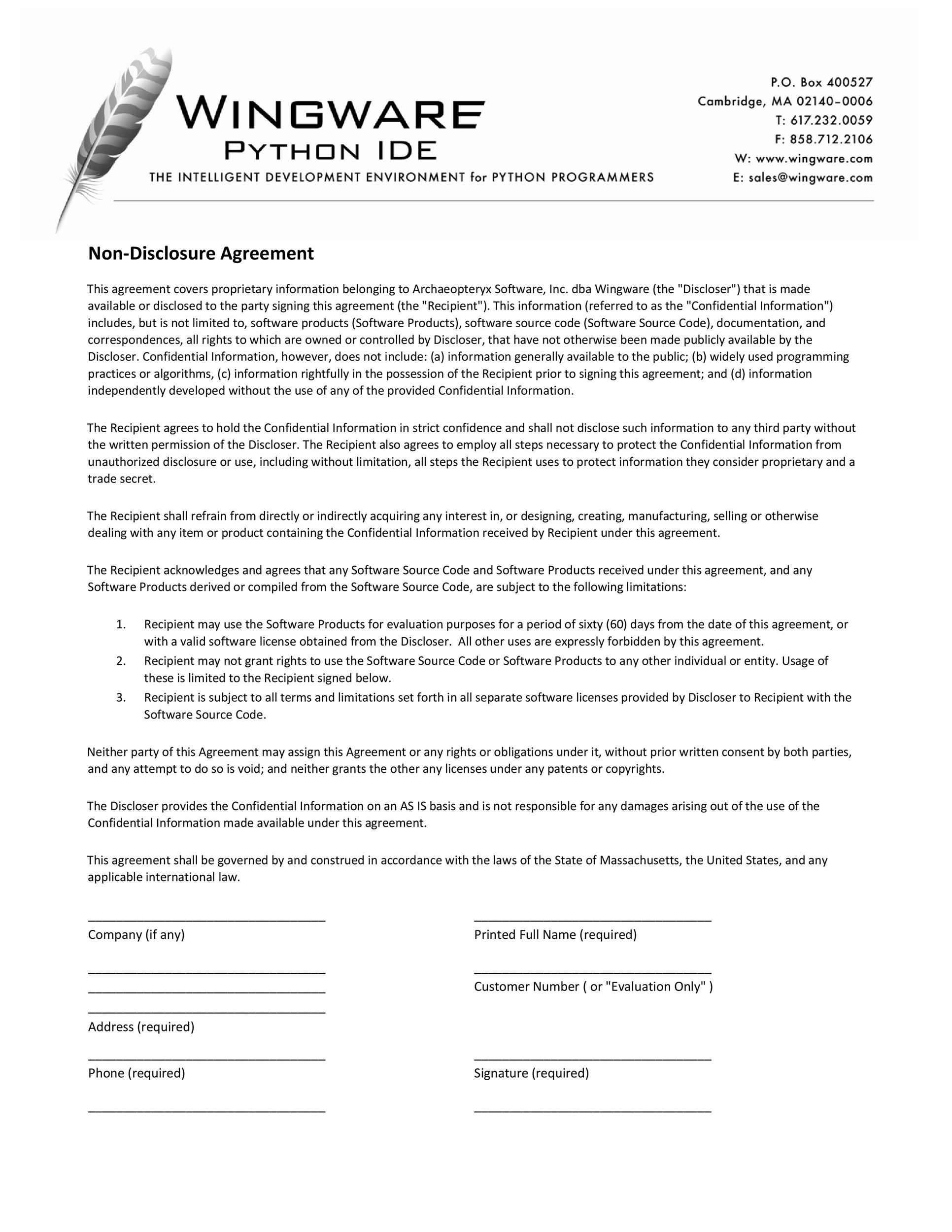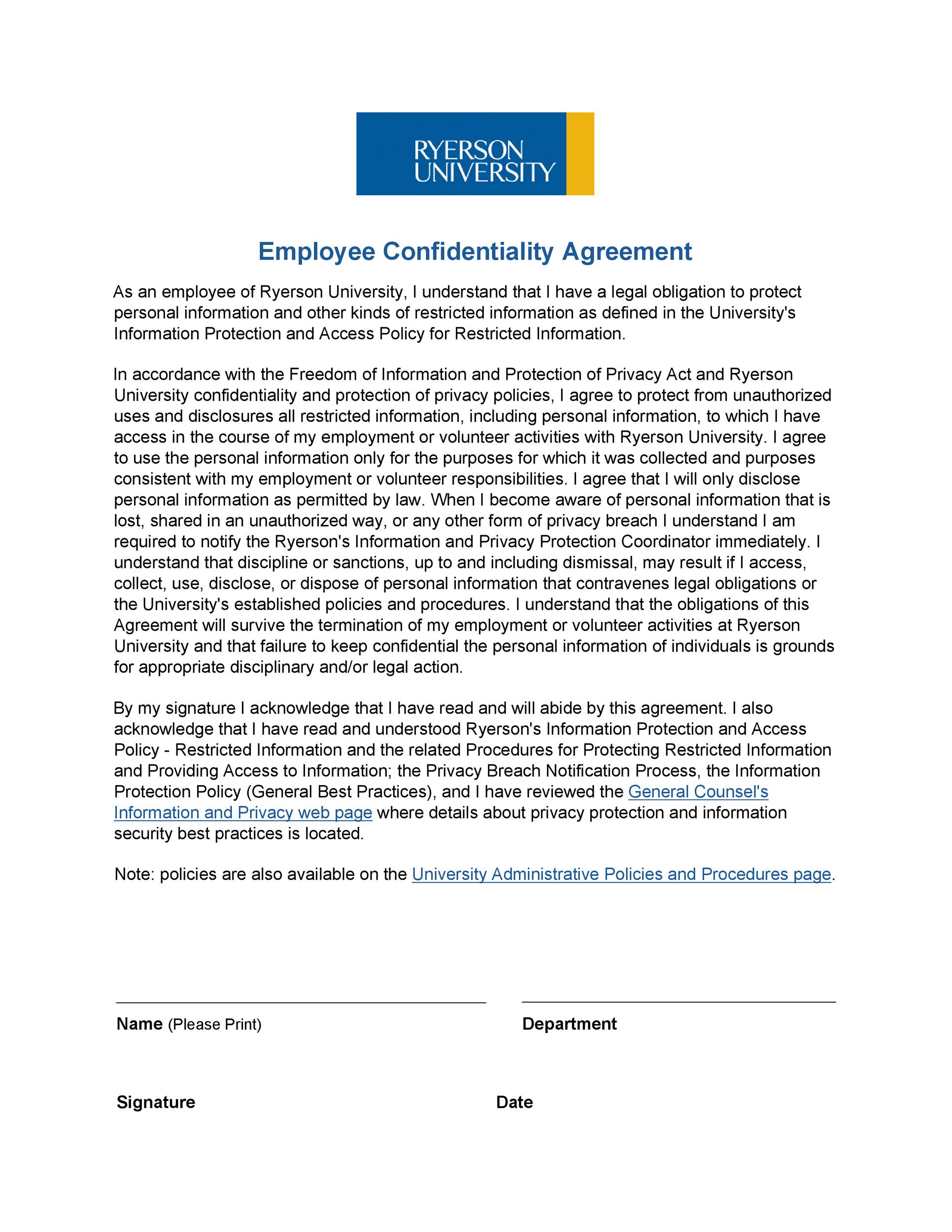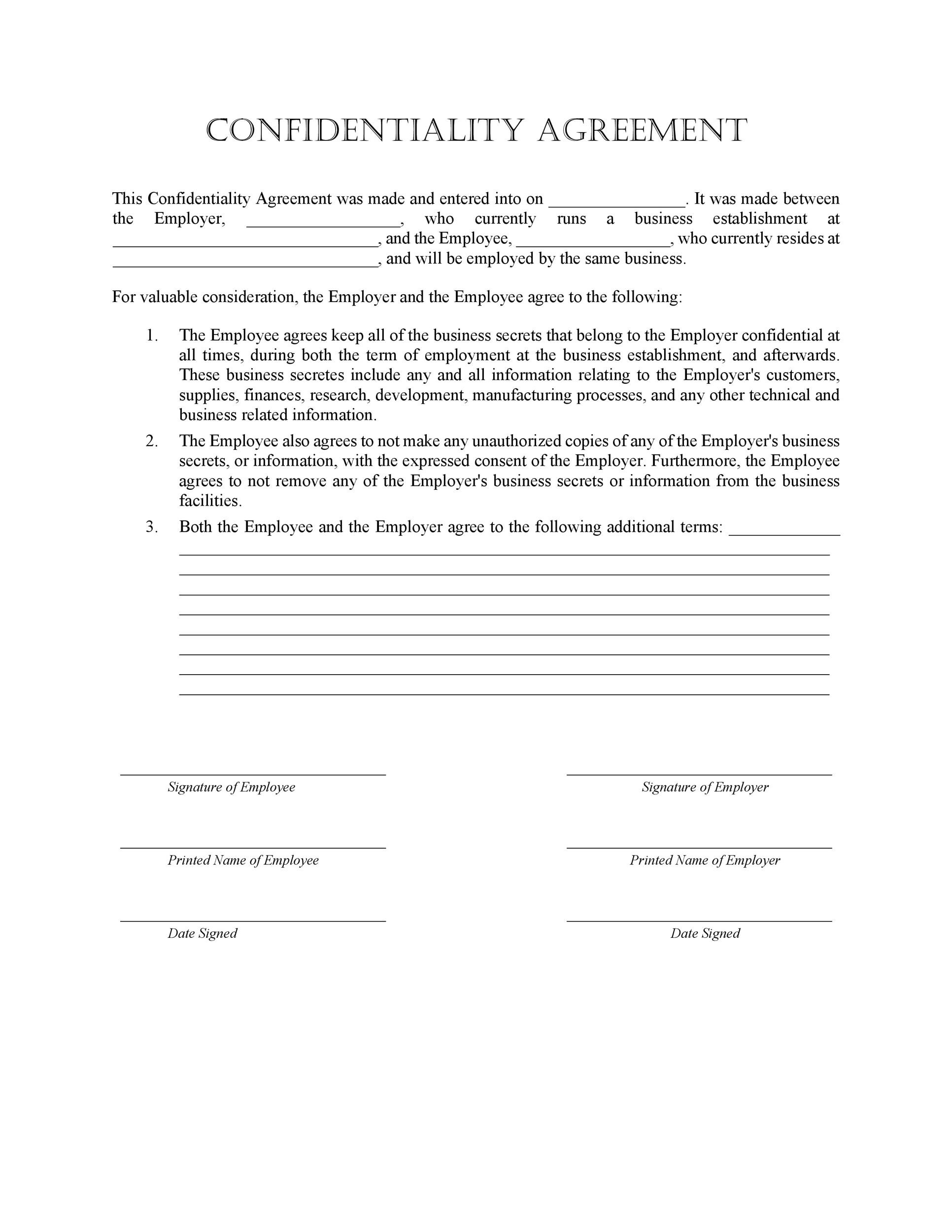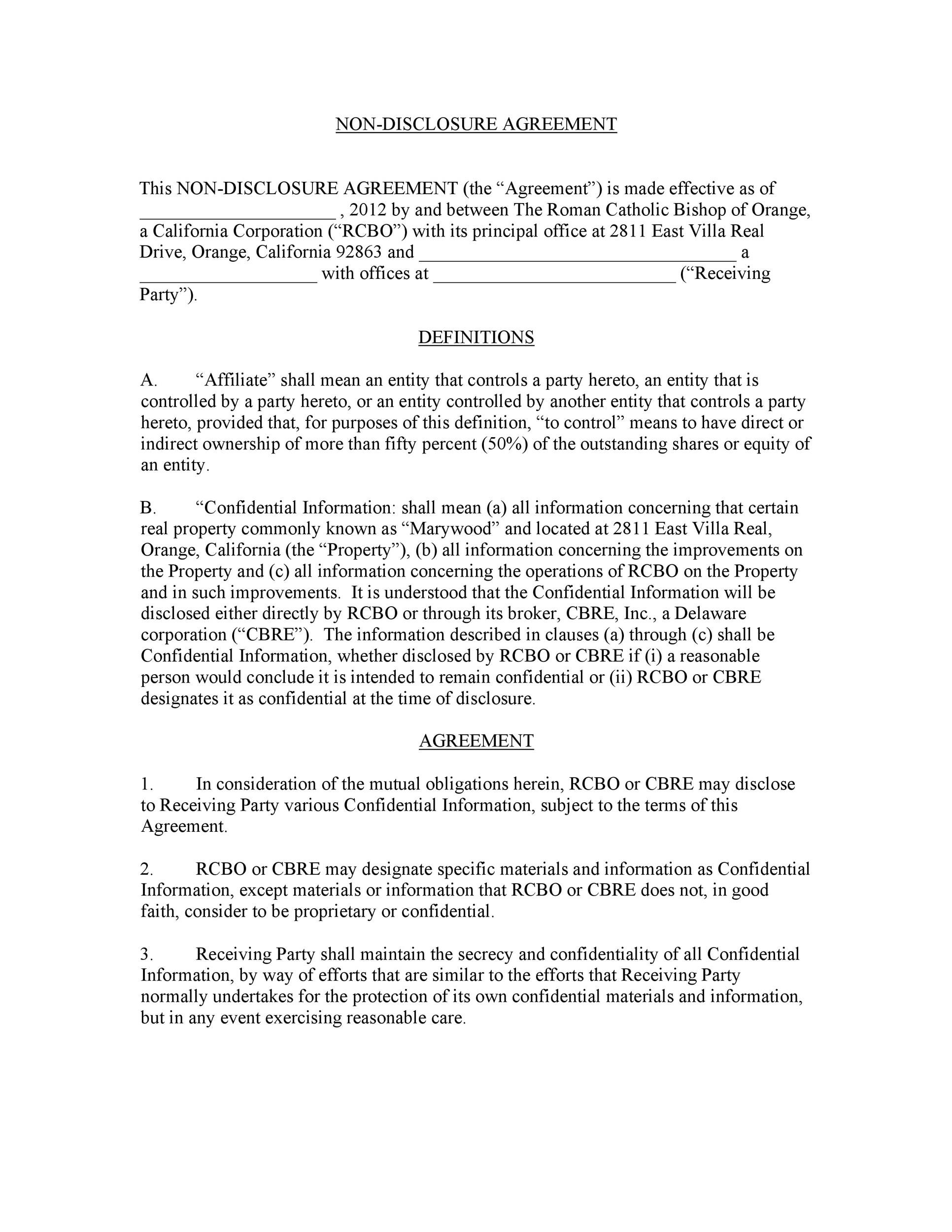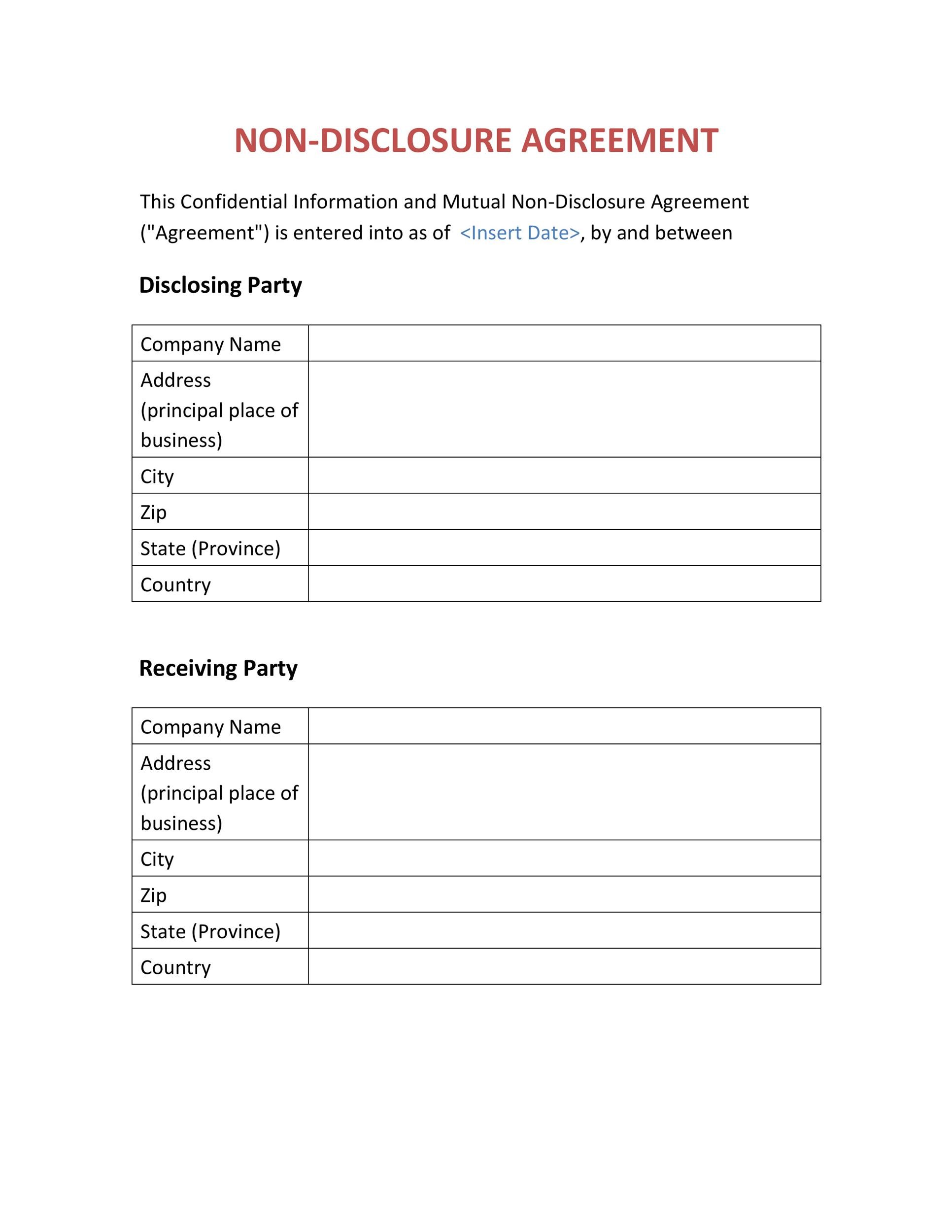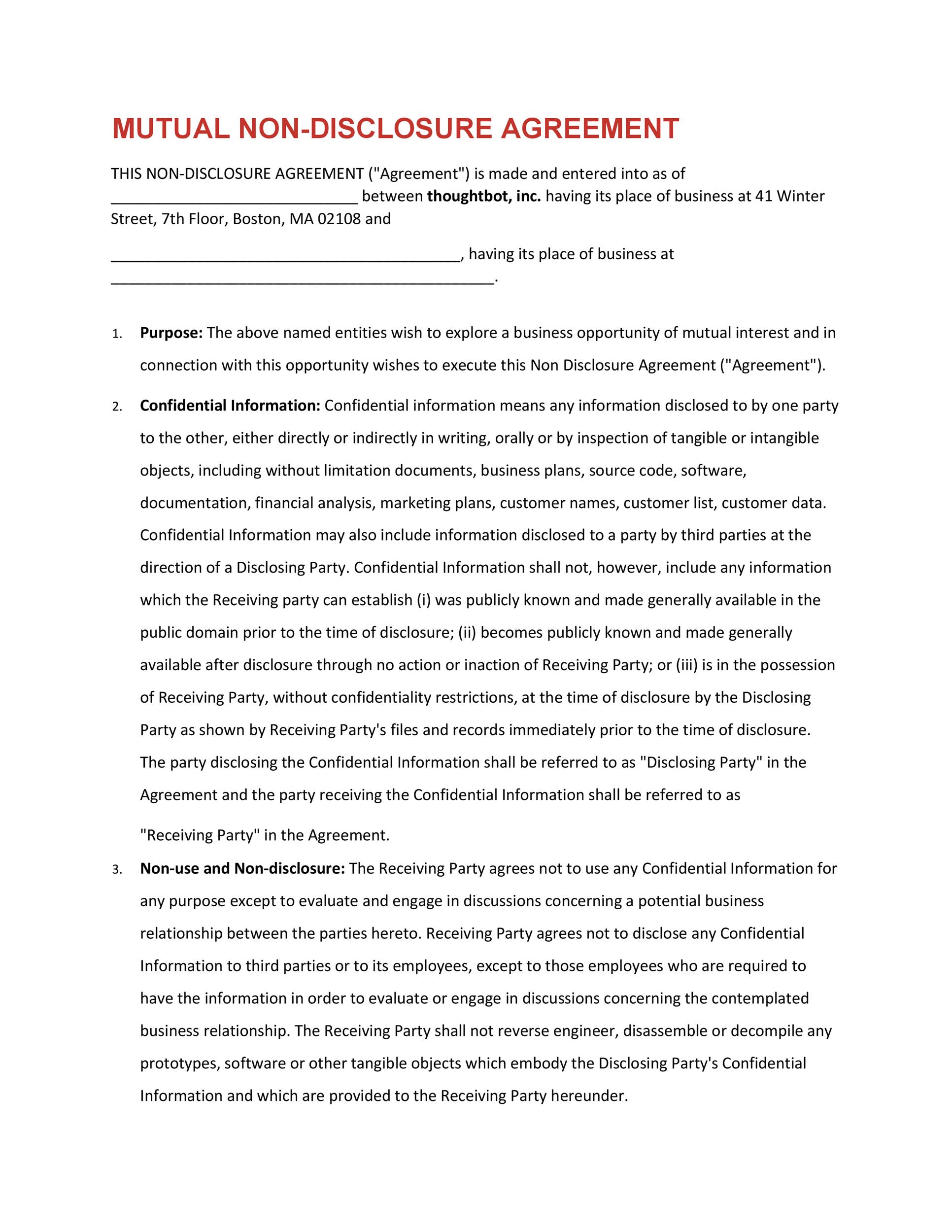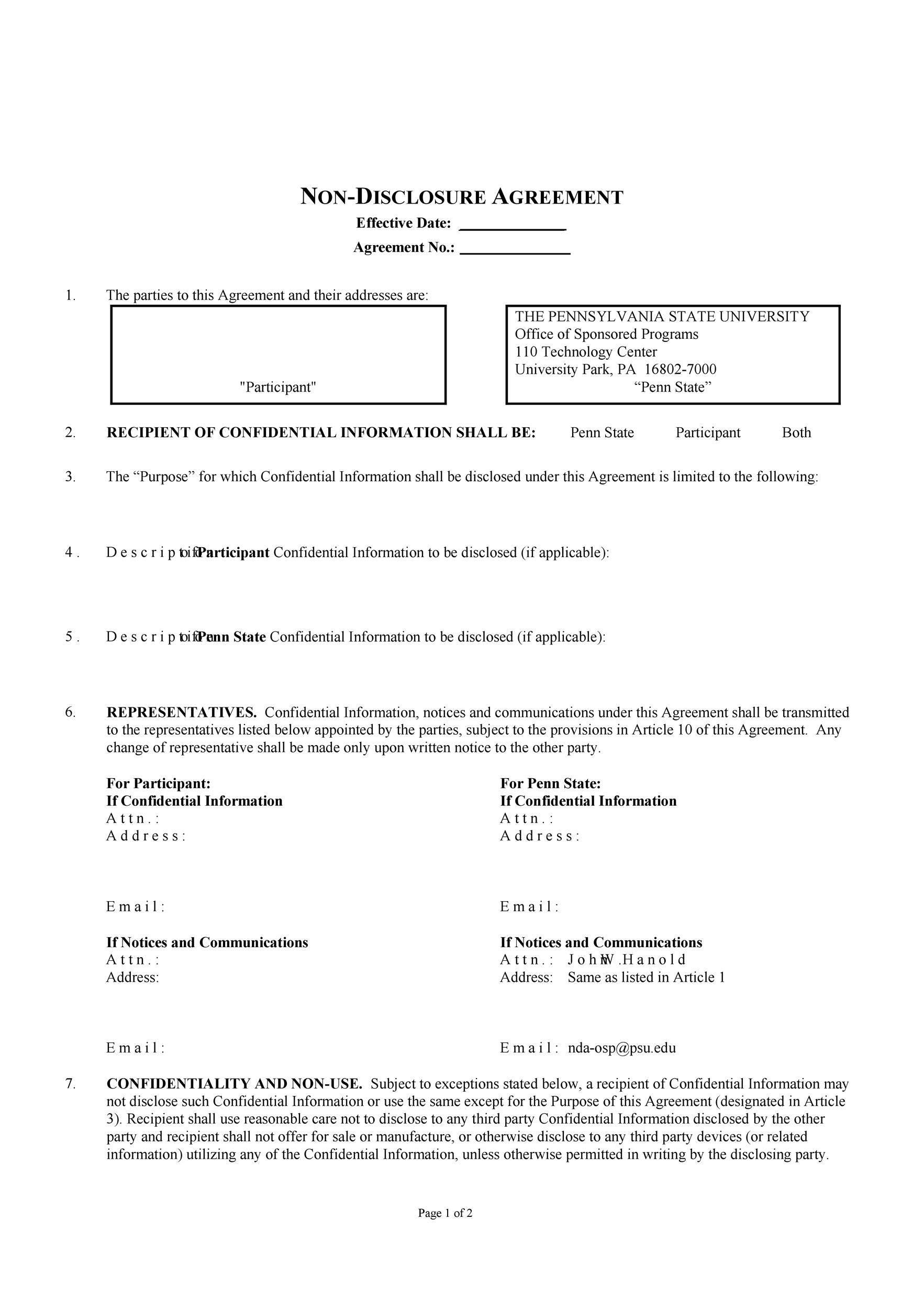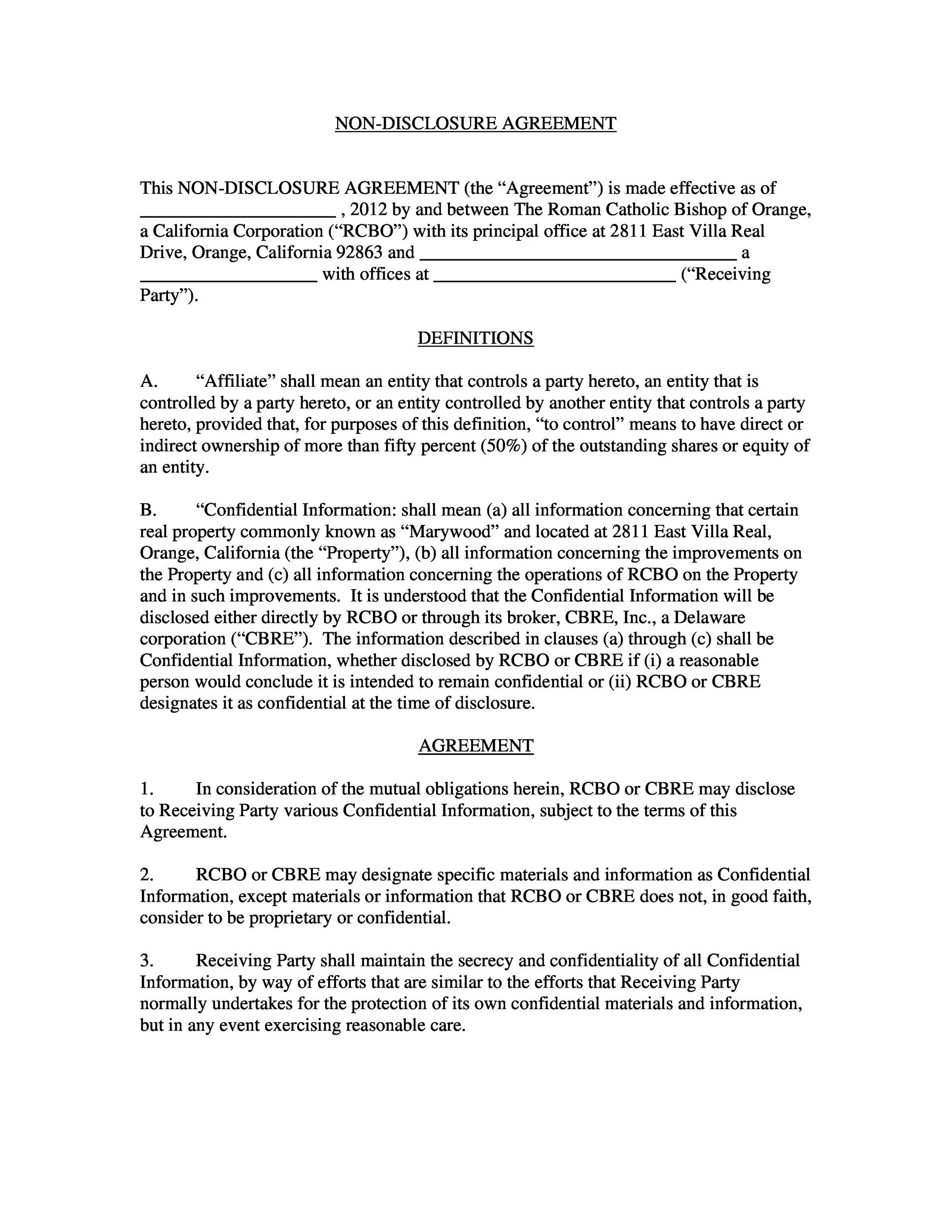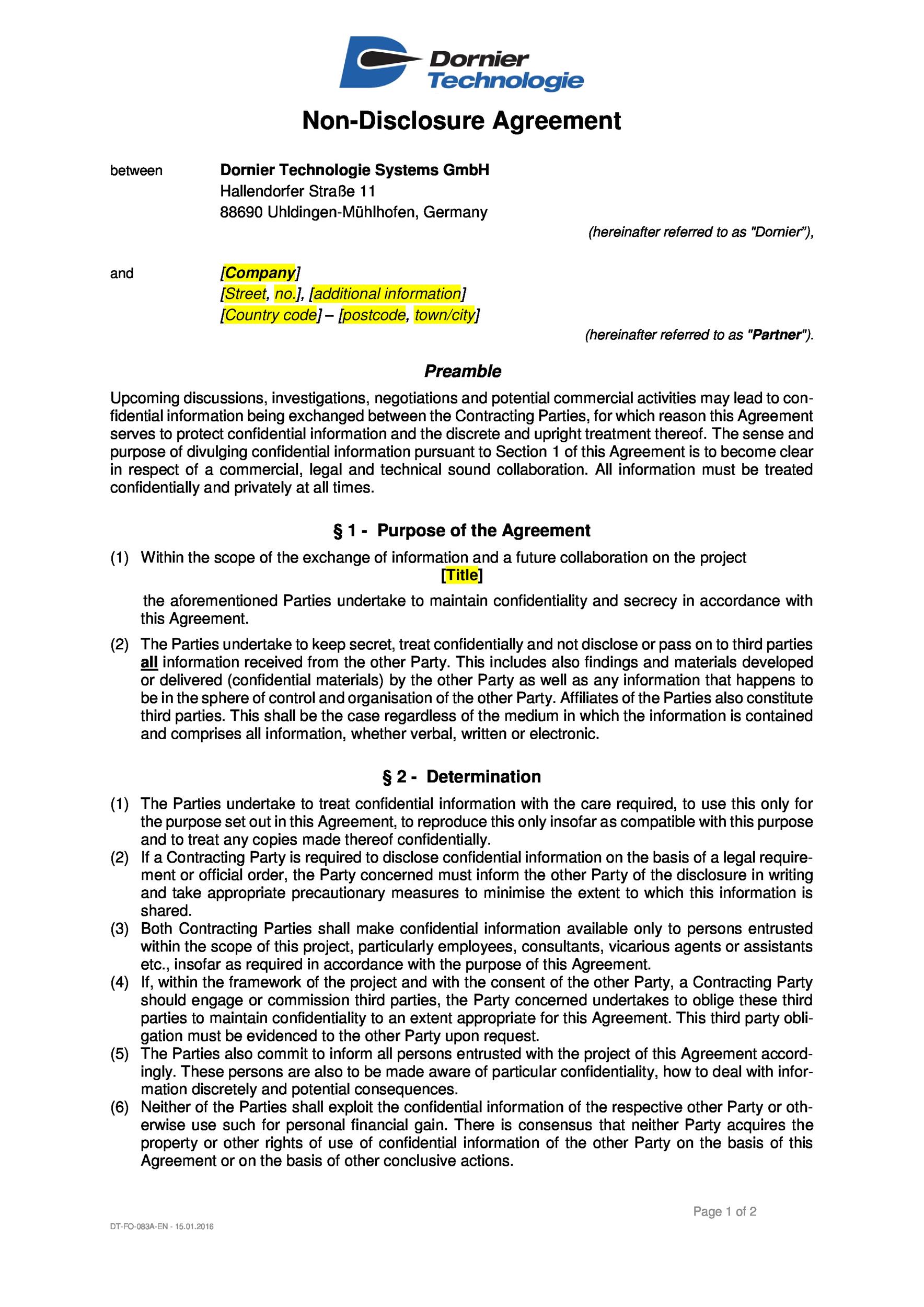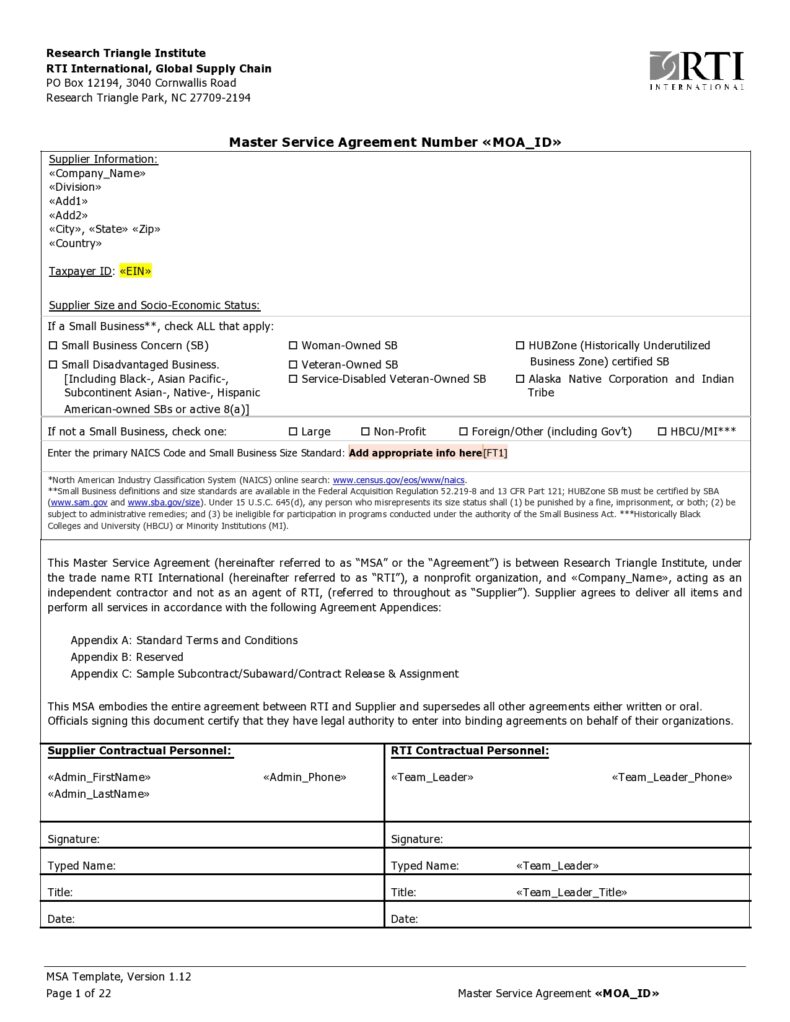If you are looking at making a non-disclosure agreement template, you might have been looking online at NDA templates to see what must be included in these documents. You will want to have the right information in your NDA agreement template or your NDA form so that you can use your NDA for the state intention. NDA examples can be limiting for your writing process, however, because some of these forms need to have additional information that a basic version will not need.
When creating a non-disclosure agreement template, you will want to use this guide to be sure that you don’t miss any of the important details. These agreements can be critical to keeping information confidential that should not be shared. This might be a document that is needed for your business, or you might need to use an NDA for personal reasons or for a project that you are working on developing a product or some other item.
Table of Contents
- 1 Non Disclosure Agreement Templates
- 2 What is a non-disclosure agreement?
- 3 Can I make my own non-disclosure agreement?
- 4 NDA Drafts
- 5 How do you write a non-disclosure agreement?
- 6 Is a non-disclosure agreement legally binding?
- 7 What happens when you break a non-disclosure agreement?
- 8 Non Disclosure Agreement Forms
- 9 How to write a non-disclosure agreement
- 10 NDA Examples
- 11 NDA Documents Need to be Drafted Properly to be Useful
Non Disclosure Agreement Templates
What is a non-disclosure agreement?
A non-disclosure agreement is a contract between two parties that states that the people who sign it will keep the information listed in it private and that they will not share anything to do with the information with anyone else during the term of the agreement. This kind of agreement is made to protect these kinds of information:
- Sensitive
- Technical
- Commercial
- Valuable
- Proprietary
There are various kinds of information that you might not want others to know, whether the parties are people in your family or friend circle or whether they are business partners or contacts. This is a binding contract and one that is legally enforceable for all the kinds of information listed above.
Can I make my own non-disclosure agreement?
You can make your own non-disclosure agreement or NDA drafts, but you will need to know which things need to be added to this form so that you can count on it to be effective if you need to enforce it. This is something that lawyers typically do for clients because of the importance of this form for business or product development use, but that does not mean that you cannot make your own if you are aware of what needs to be included in it.
There are various kinds of non-disclosure agreements that you might need to write. These agreements are used for different purposes, so you will want to be sure that you are working with the right template for your needs.
- Basic NDA
- Mutual Non-Disclosure Agreement
- Employee Non-Disclosure Agreement
- Interview Non-Disclosure Agreement
The purpose of a non-disclosure agreement is to prevent confidential information from being shared publicly or with others. The NDA form, no matter which type it is, is written to provide legal protection for your intellectual property, your written documentation, and private information.
NDA Drafts
How do you write a non-disclosure agreement?
Writing this kind of document means that you need to be sure that you are using the right legal clauses and that you are protecting the information that must be kept private correctly. Creating an NDA that does not hold up in court is less than ideal, and you will want to be sure that you are not working hard on a document that does not serve its purpose.
This document needs to outline the exact information that is protected, and it needs to list the term of the agreement. Many of these NDAs are not meant to be upheld for life. This is a contract that lasts for a specific duration and is usually involved in keeping business competitors from being able to steal your proprietary information or products and create copycats. This kind of document can also be used to protect the information that people are given in interview processes.
Is a non-disclosure agreement legally binding?
These agreements are legally binding, and they can be used in a court of law. You will want to be sure that you have the right information in your document so that it can be used to protect the right information in the case that someone should break the agreement and need to be held accountable for their actions. If your NDA is not properly created, it might not be useful for the purpose that it was intended for. This can lead to all kinds of problems for your business, and you might not be able to stop another competitor or former employee from taking your confidential information with them to a new business or to a competitor.
What happens when you break a non-disclosure agreement?
There are many different kinds of penalties that might be required for those who break an NDA. These are usually monetary fines, and you might also be expected to pay the legal costs for the other side. This can get very expensive, and you will want to avoid this outcome for an NDA that you agree to sign. This is the main benefit of creating these agreements, and the cost alone of this kind of mistake can make it quite discouraging for anyone involved in the agreement to break it.
Non Disclosure Agreement Forms
How to write a non-disclosure agreement
If you have been looking at different versions of this kind of document, these are the items that must be included in the agreement in every case. You might have to add some additional language to the contract for specific uses, like interviews or other kinds of connections, but the foundational information in this document is always the same.
- Disclosing and Receiving Parties: The NDA will always need to start with establishing the parties who are involved in the agreement. There will be a “disclosing party” and a “receiving party”. The disclosing party is the entity that is sharing the information. The receiving party is the one that is receiving it. This is always the case, and you will have to have both parties named in this kind of document for it to be valid.
Mutual NDAs means that both parties share information back and forth. This is not always the arrangement, and sometimes the flow of information only goes in one direction. - Confidential Information: When the parties have been identified, you have to specify which information is being protected. This part of the document needs to be detailed and include all the relevant information related to the NDA. This is the heart of the actual document, and you will need to be very clear in this portion of the wording if you want your NDA to hold up in a legal context.
This part of the document usually is for the protection of trade secrets, business ventures, creative endeavors, personal information, written information, and even proprietary information about products. In reality, any information that is private and that should not be shared can be protected with an NDA. - Exclusions: There are some things that will require that they be excluded from some NDAs. You might need to note that some of this information is already available in the public domain. You might also need to indicate that any information that was present before the NDA was signed is free to be discussed. Information that has already been discussed publicly will also be excluded from the NDA.
These items will need to be listed individually in this part of the NDA so that they can be referred to specifically if there is conflict surrounding the exclusions. - Non-Disclosure Obligations: The second largest part of your non-disclosure document will be your obligations section, which will cover the receiving party’s obligations to the disclosing party. This will never be a single clause and will instead be made up of various different requirements that are carefully explained in each unique description. This is important to remember when you are looking at this part of the document that you are drafting. You cannot afford to leave out any details here, as it is hard to enforce your NDA.
There will also need to be a section of this part of the document that indicates what the responsibility of the various parties will be in regard to observing the NDA. The more detailed this information is, the better, and you will be much more likely to be able to enforce your document if need be if you are clear about the details of the agreement in this section. - Signatures: You and the other party involved in this agreement will both need to sign the document and date your signatures. All other representatives of the parties involved will also need to sign. An unsigned NDA is not useful to you, so be sure that you are not missing this critical final step for executing your NDA document.
Some things that might be included in your NDA as well:
- Non-Disclosure of Transaction: The receiving party will need to promise not to let anyone else know that the disclosing party has shared or used confidential information for any purpose. This agreement will also indicate that the receiving party will not let anyone else know that a transaction was discussed or negotiated or that a transaction has been taken at all. The details of any relationship cannot be discussed either.
- Non-Solicitation Agreement: This clause can be added to indicate that one or both parties cannot solicit employees of the company in question to try and take them away from the other business. This can be harder to enforce than some of the other possible clauses that you might want to add, but you can still enforce this part of the document if you are clear about what is not allowed under the NDA.
- Non-Compete Agreement: This part of the document, if added, will be used to ensure that the parties agree that a business that is directly competitive with the other company cannot be engaged in. There might be limitations on the kind of business, the location of the business, or the kinds of products that cannot be made without violating the NDA. This is a very common addition for businesses that are engaged in product sales, but there are many other reasons that a non-compete might be needed to protect your business if someone ceases to work for you.
- Non-Circumvention: This clause is added when you want to be sure that the disclosing party’s business contacts cannot be used by the receiving party in any way other than the execution of business for the disclosing party. This is common in industries where there might be limited suppliers for a certain product or material or when there is a lot of competition in the market for similar products.
- Time Frame/ Termination: The NDA that you are drafting can also include the duration of the arrangement. Some NDAs are for life, but most of them are only in place for a set number of months or years. This means that you will have an effective date and a disclosure period that is listed in this part of the document.
NDA Examples
NDA Documents Need to be Drafted Properly to be Useful
If you are going to make your own non-disclosure agreement template for work or personal use, you need to be sure that you are creating it correctly to suit your needs. An improperly drafted NDA will be useless for your business or personal needs, and you do not want to find out that this is the case when you need to enforce the document at some future date. Making sure that you have all the right information included in your NDA is critical for utilizing it for its intended purpose.
This guide will help you to write an effective NDA that you can use for your business needs and any other purposes related to interviewing or employment. You will be able to write a correct and legally-binding NDA with this guide on your side that you can use for a whole variety of different needs with ease.

